Back in 2021, Jelmer Boskma discussed Scanline VFX‘s involvement in Eternals. He subsequently worked on Andor‘s first season and joined DNEG in 2022.
How did you and DNEG get involved in this series?
I joined the project after post-production had started, stepping in to support the creative direction and manage the considerable workload assigned to DNEG. With the show’s intricate design challenges, my background in art direction aligned well with the needs of the project. I was genuinely thrilled to contribute to such a creatively ambitious series.
How was the collaboration with the showrunners, directors, and VFX Supervisor Tobias Wolters?
Collaborating with Toby, and VFX Producers Will Reece and Max Serges, was a pleasure, especially given the tight schedule we were working under. Since I joined the project later in the process, it was crucial for me to quickly align creatively with Toby. The first couple of weeks were dedicated to understanding the show’s scope and connecting with the filmmakers’ vision. Toby was exceptionally generous with his time and shared valuable insights to help expedite this alignment. Ideally I like to start any project I get involved with by working up a handful of concept illustrations for key scenes in the show. In this case, there was no time for that and instead I ended up painting directly on top of some of our early composites as a way to further familiarise myself with the material as well as set a visual target for the production team to provide feedback on.
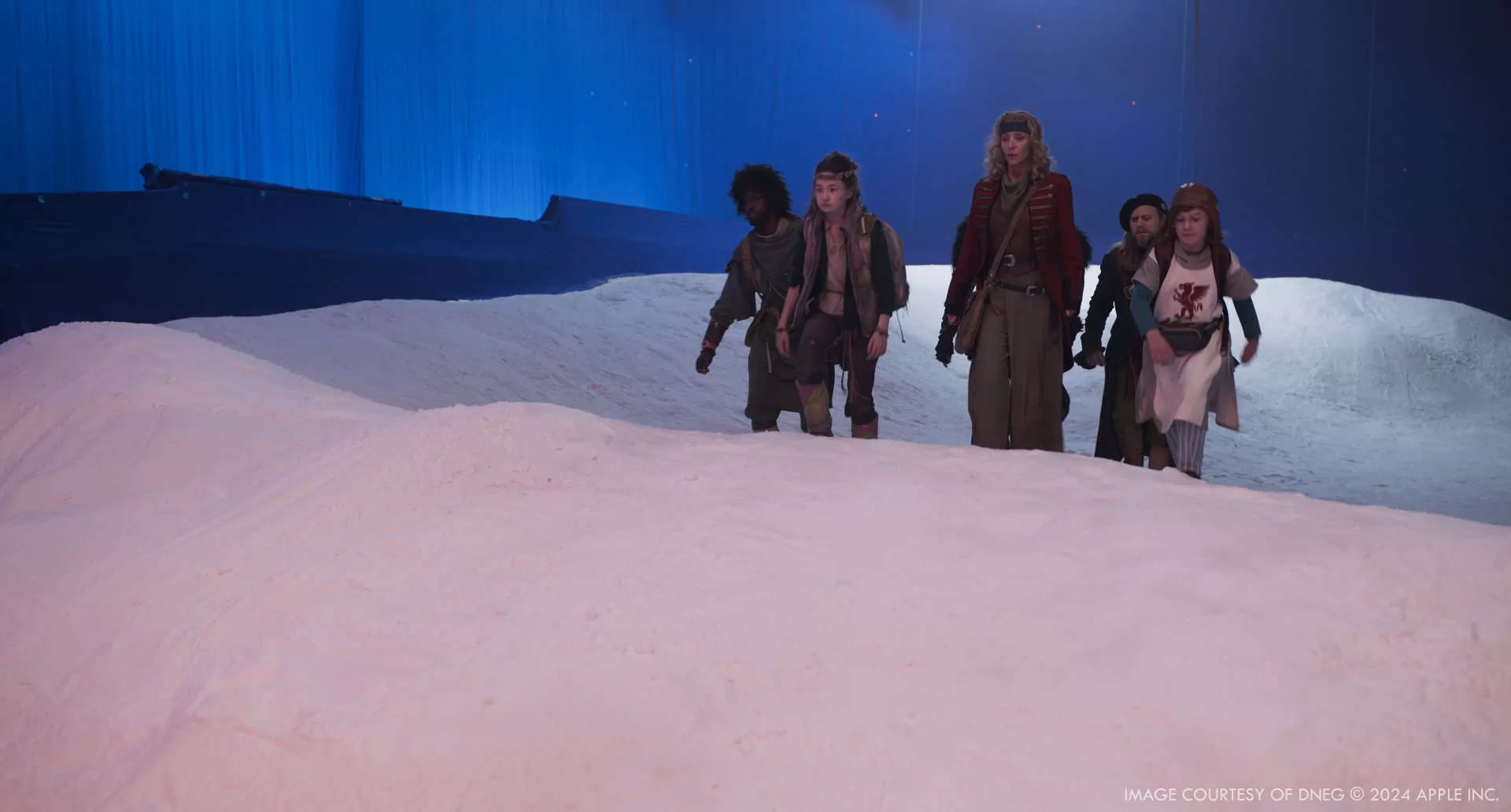
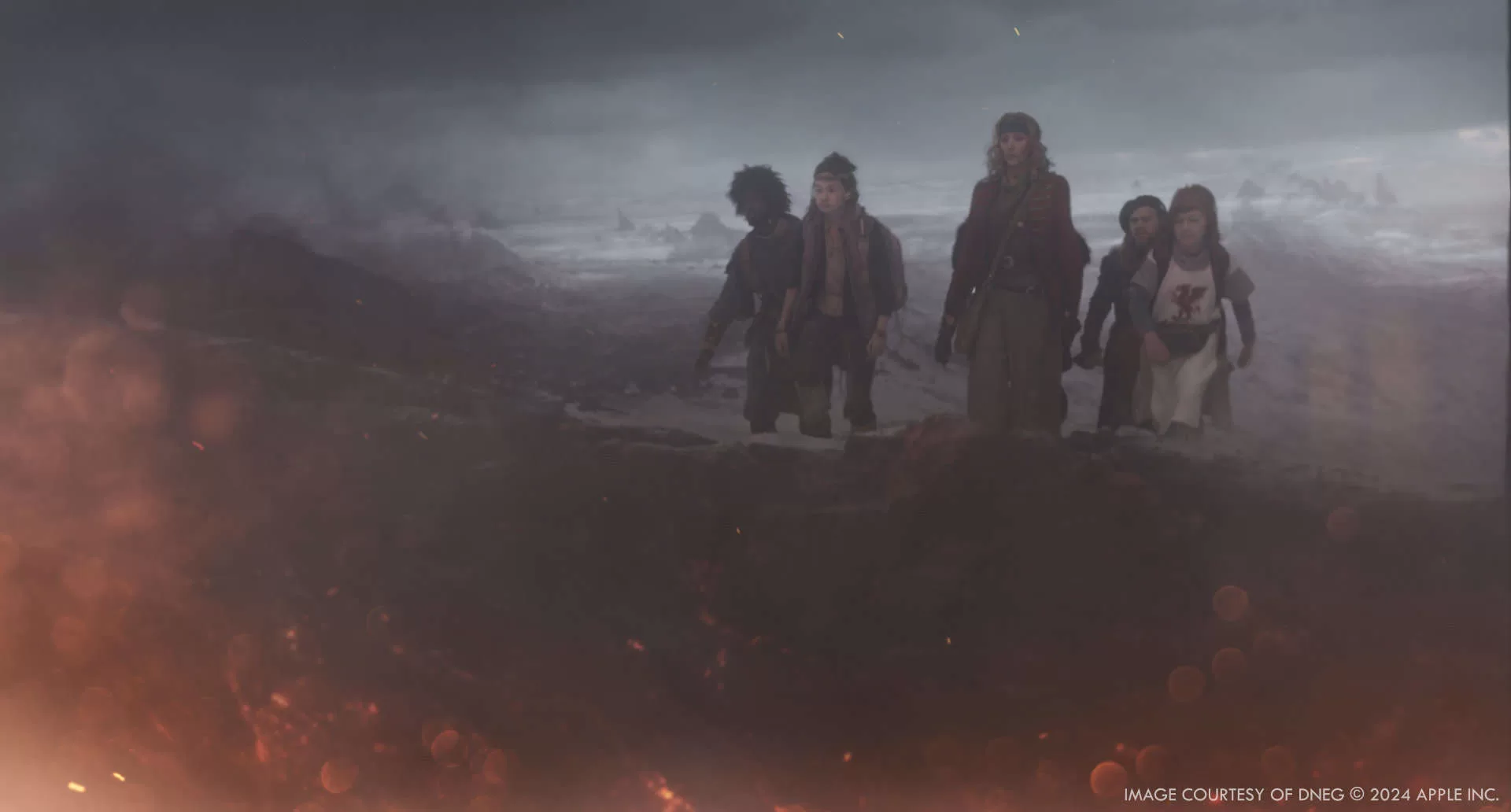
How did you organize the work with your VFX Producer?
My producer Viktorija Ogureckaja did a stellar job managing the delivery of a total of 1,094 shots across all 10 episodes of the season. The work was split between 3 units located in both our Montreal and Mumbai locations.
Which sequences did DNEG work on?
DNEG delivered work for a total of 42 sequences, which included roughly 460 shots in and around the Fortress of Darkness across 6 episodes. Other major sequences we handled included Kevin’s Bedroom Escape, the Mayan City and Jungle, Sky Citadel, Stonehenge, Mansa Musa’s Desert, and the Neanderthal Settlement. We also tackled smaller sequences, such as the English Monastery in episode 4 and the New York Gangster face-off. Lastly, a wide shot of Mongol soldiers hurling plague-infected cadavers into the besieged Crimean city of Caffa was one among several unique ‘one-offs’ throughout the season.

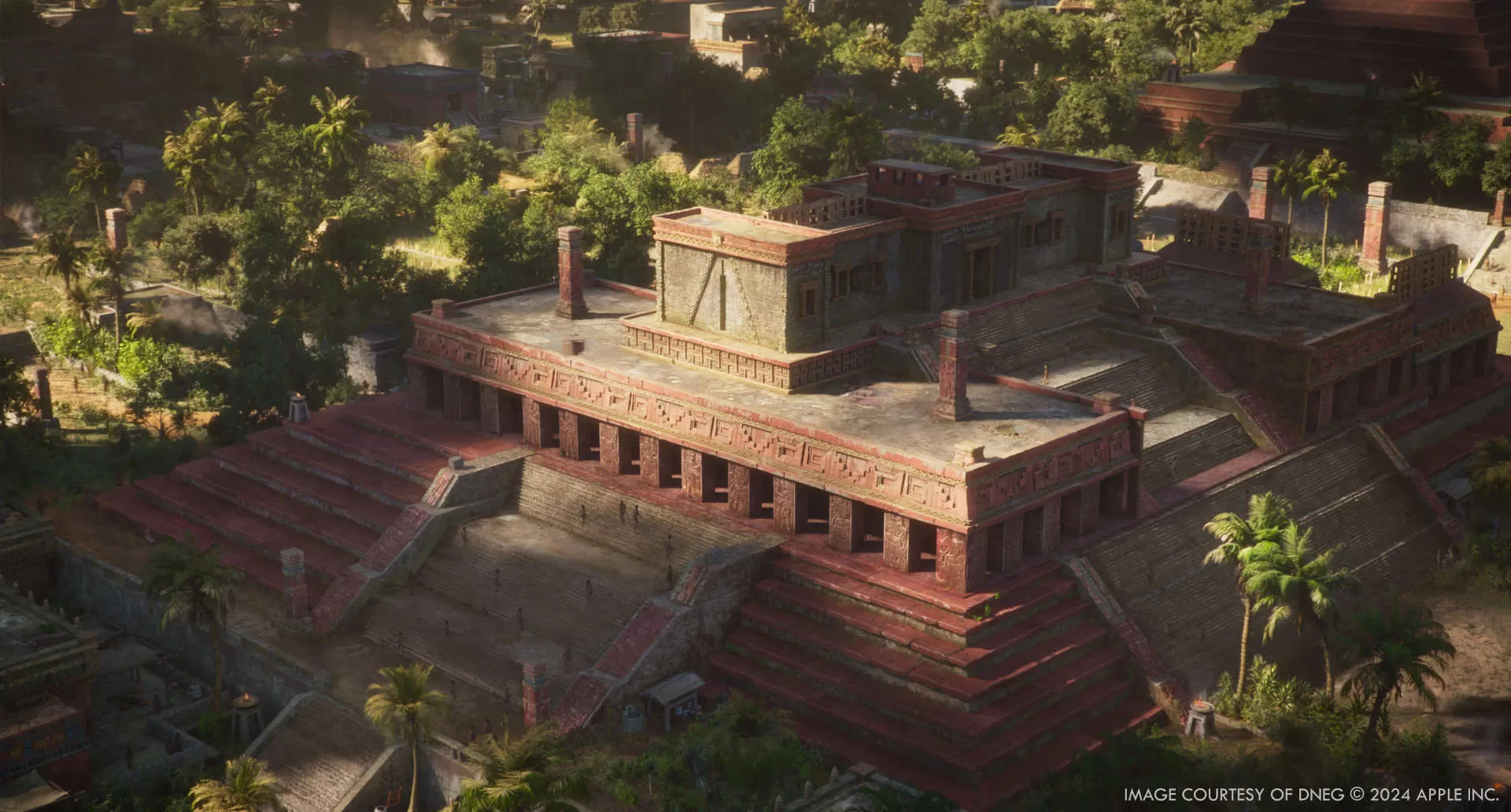
Can you describe the overall visual style of Time Bandits and how it was achieved?
With the show being a wild trip through history across the globe, each episode had a significantly different flavour, and its own identity and challenges. In terms of visual effects, we aimed to complement the show’s lighthearted and colourful tone by striking a balance between grounded photorealism whilst still leaning into the extravagant nature of the production and costume design. We pushed our creative choices just a bit further than usual to align with the show’s unique and vibrant style.
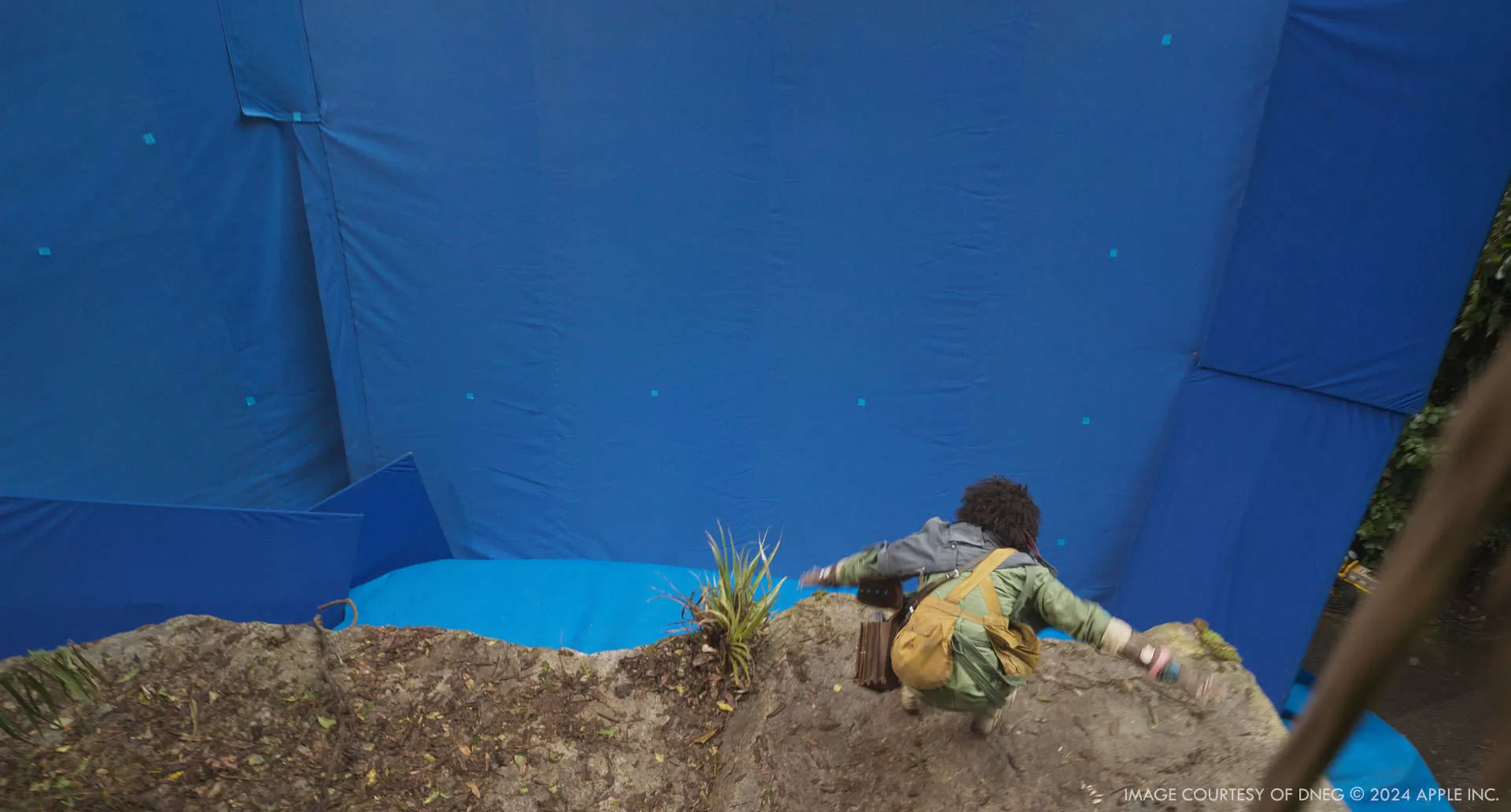
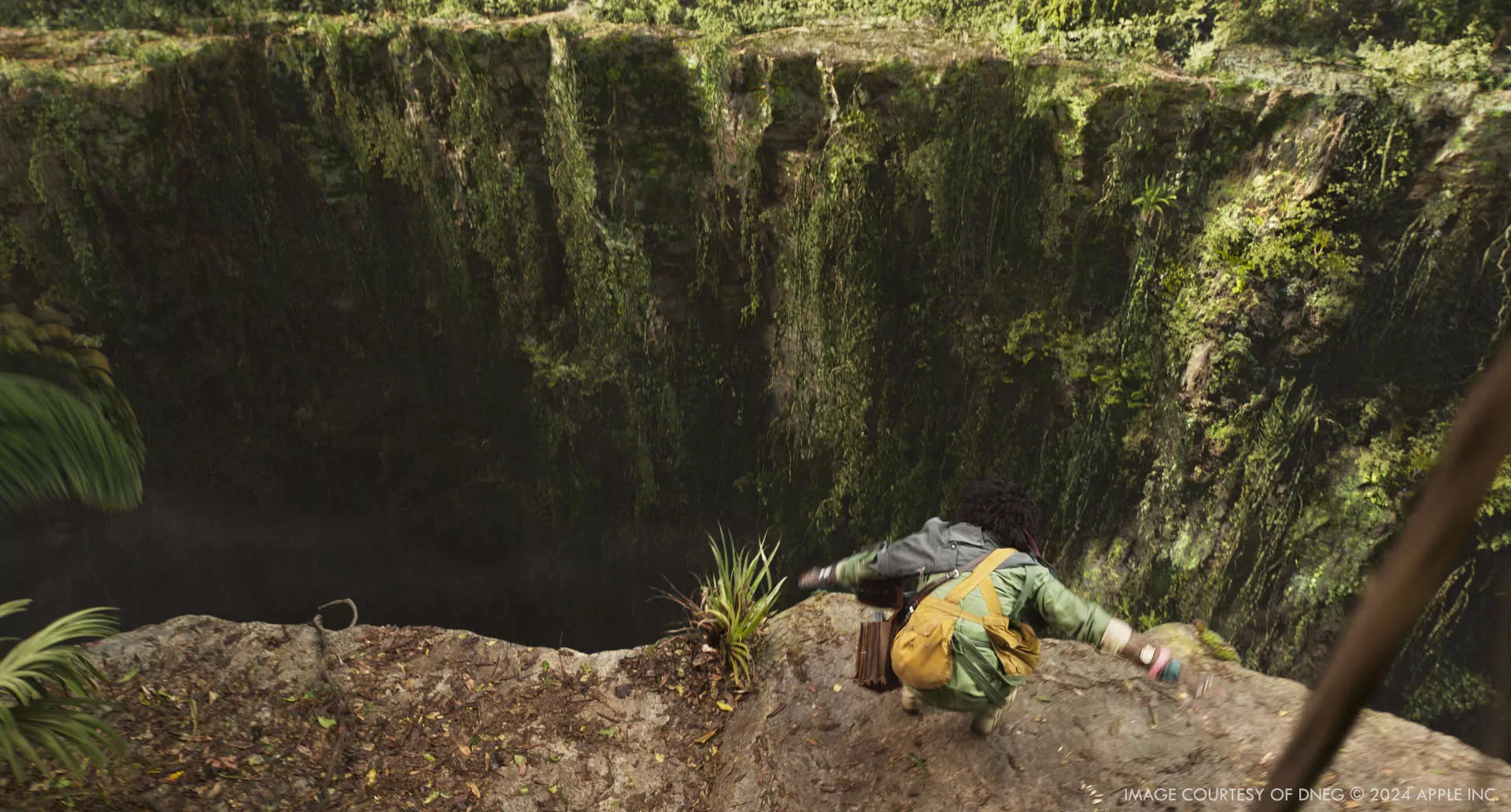
What were the main challenges in creating the Mayan city environment, and how were they overcome?
The primary challenge in creating the Mayan city environment was that it was essentially a fully synthetic space. While partial sets were photographed on a soundstage, all our wide establishing shots were entirely CG. Crafting historically plausible and visually compelling vistas of this scale posed a significant challenge, given the virtually limitless details we could include. We had to integrate everything from palm trees swaying in the wind to cooking fires, smoke plumes, blazing torches, wandering digi-doubles, and intricately designed dwellings. Despite the tight time frame, we focused on infusing each shot with as much life and detail as possible.
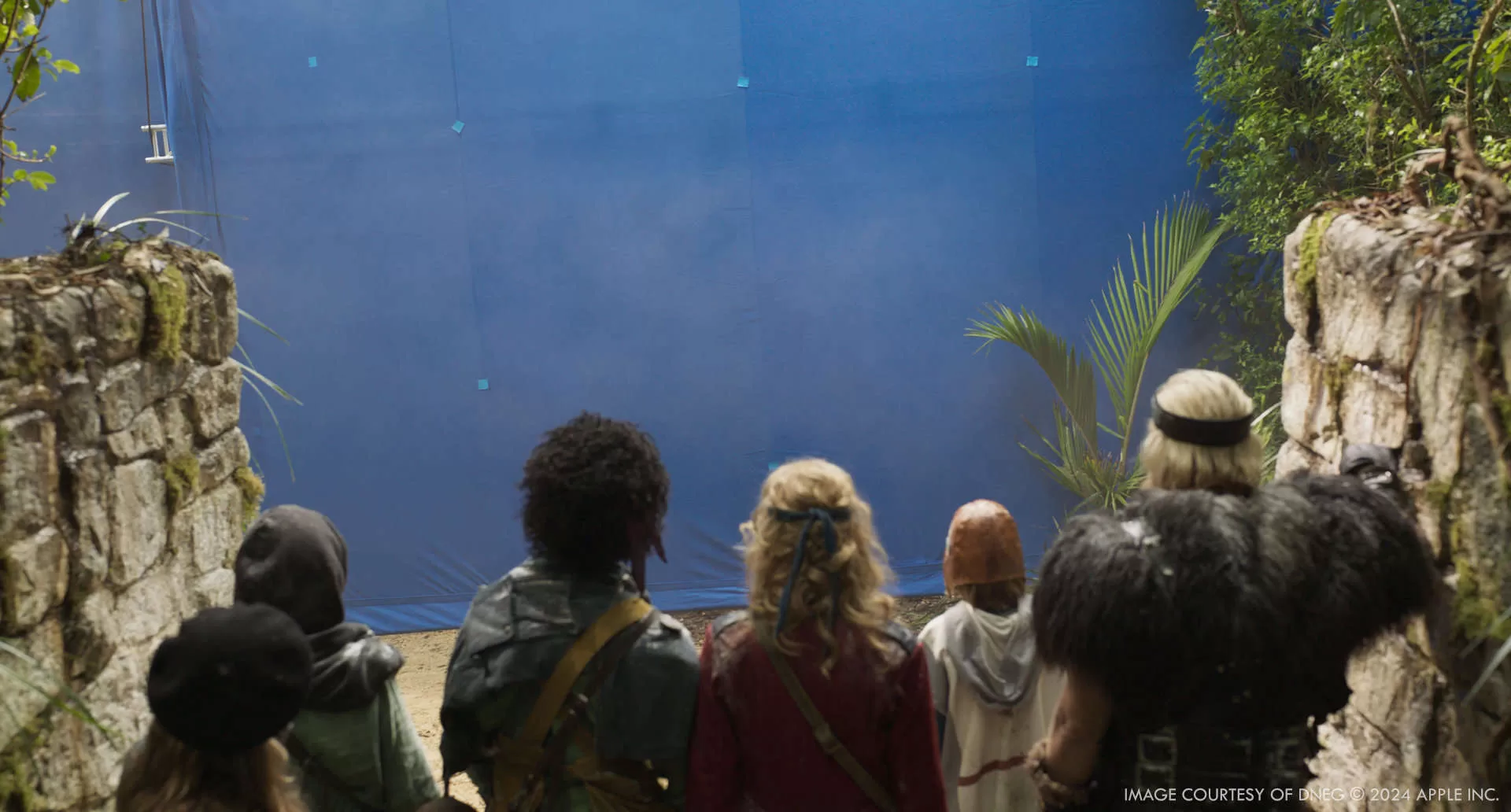

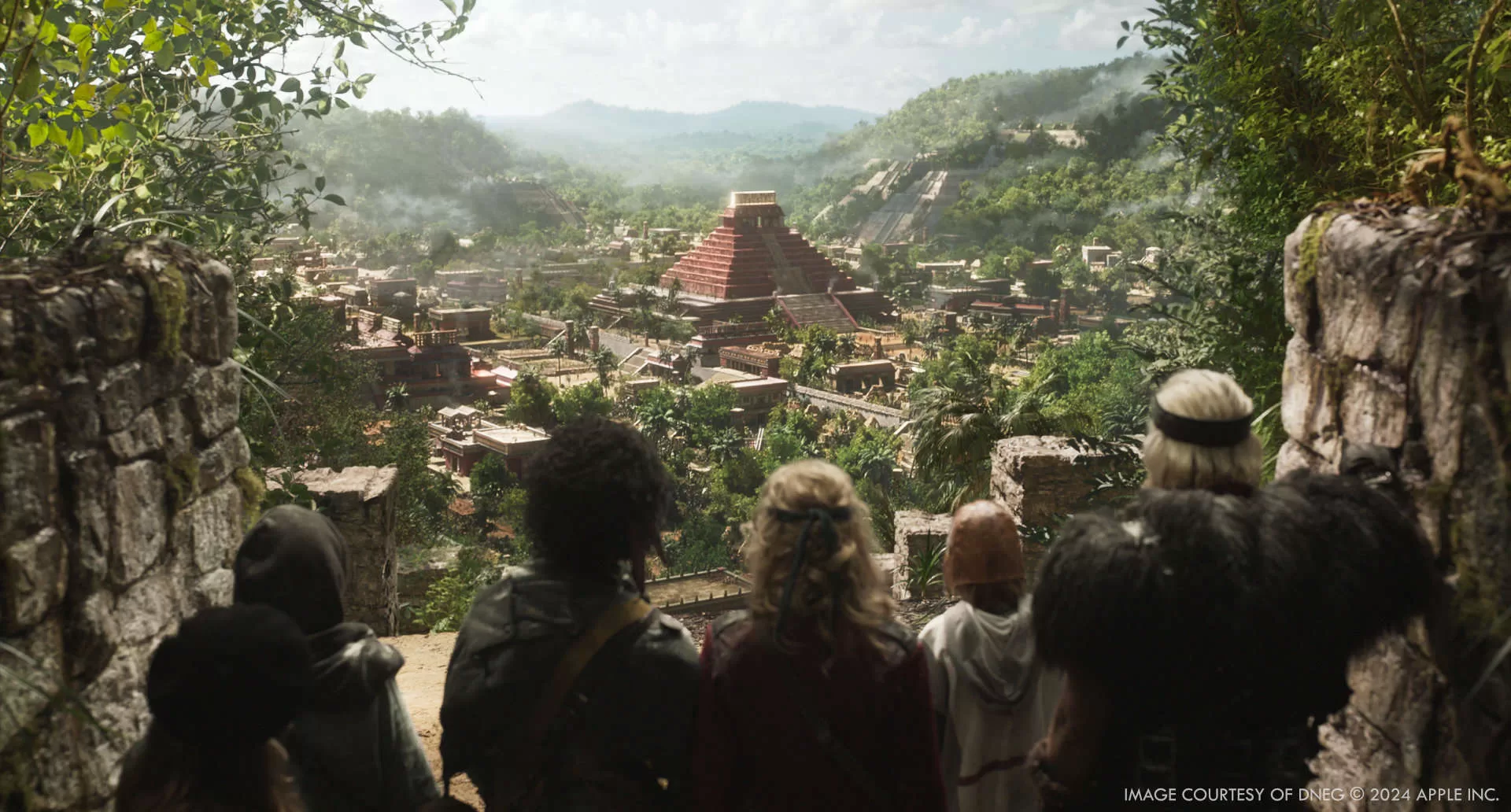
How did the team approach the creation of the Arctic Neanderthal setting?
The creation of the Arctic Neanderthal setting involved a close collaboration between our DNEG 360 team and an additional DNEG VFX unit led by Chris Nokes and Sameer Malik. The DNEG 360 team provided the virtual production elements, delivering real-time rendered environments on set. During post-production, Chris and his team enhanced the captured footage by adding extra snow, atmospheric effects, and visible breath clouds for the characters, while also smoothing the transitions between the LED background screens and the practically built sets.
Having access to the original Unreal Engine data and camera information allowed us to further enrich the virtual environments with additional atmospheric depth and detail. Although extracting characters from their LED-driven backdrops presented some challenges, the benefit of having the actors’ skin reflect the light of our real-time environments significantly improved the final quality and believability of the scenes.
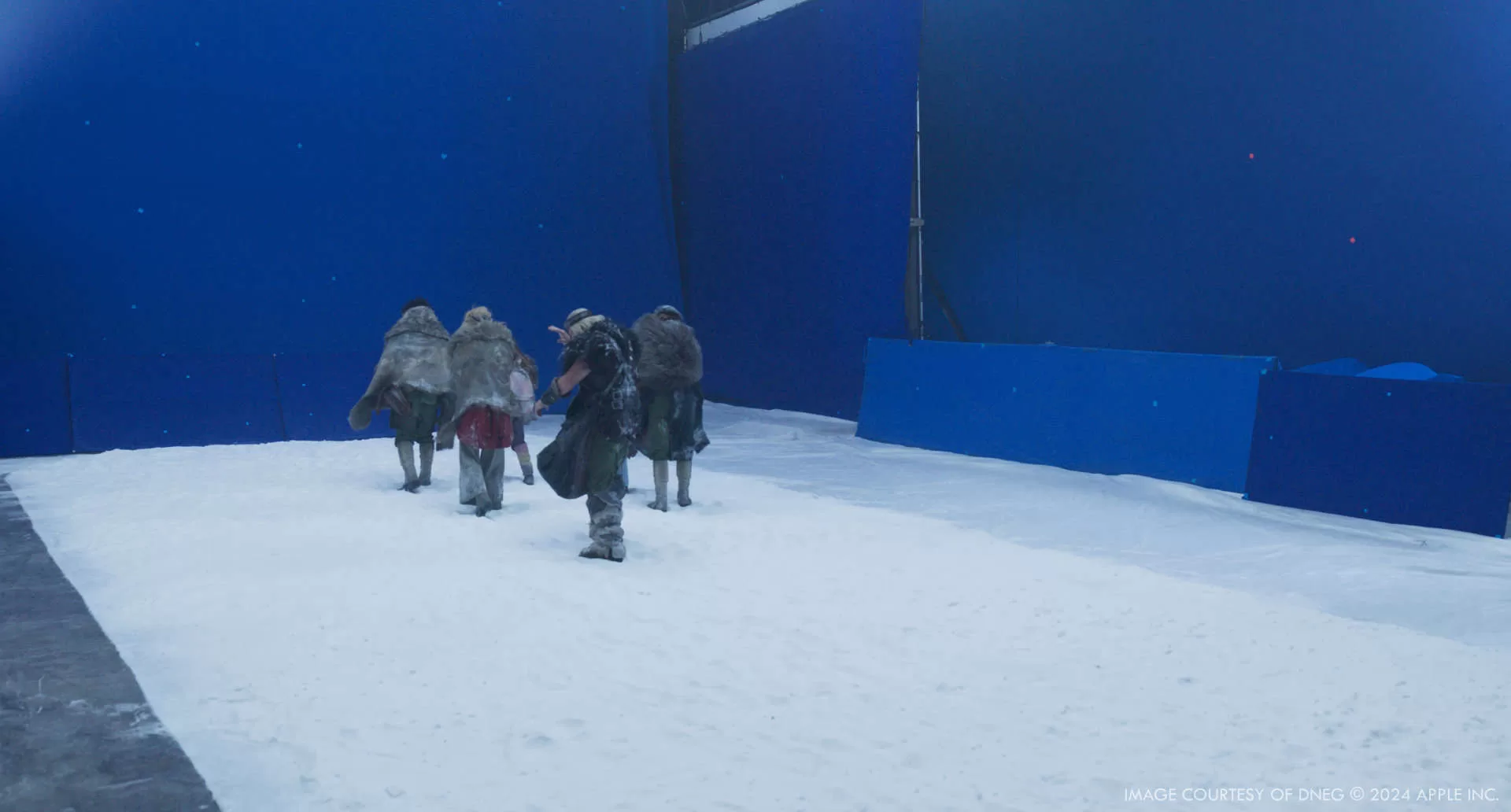
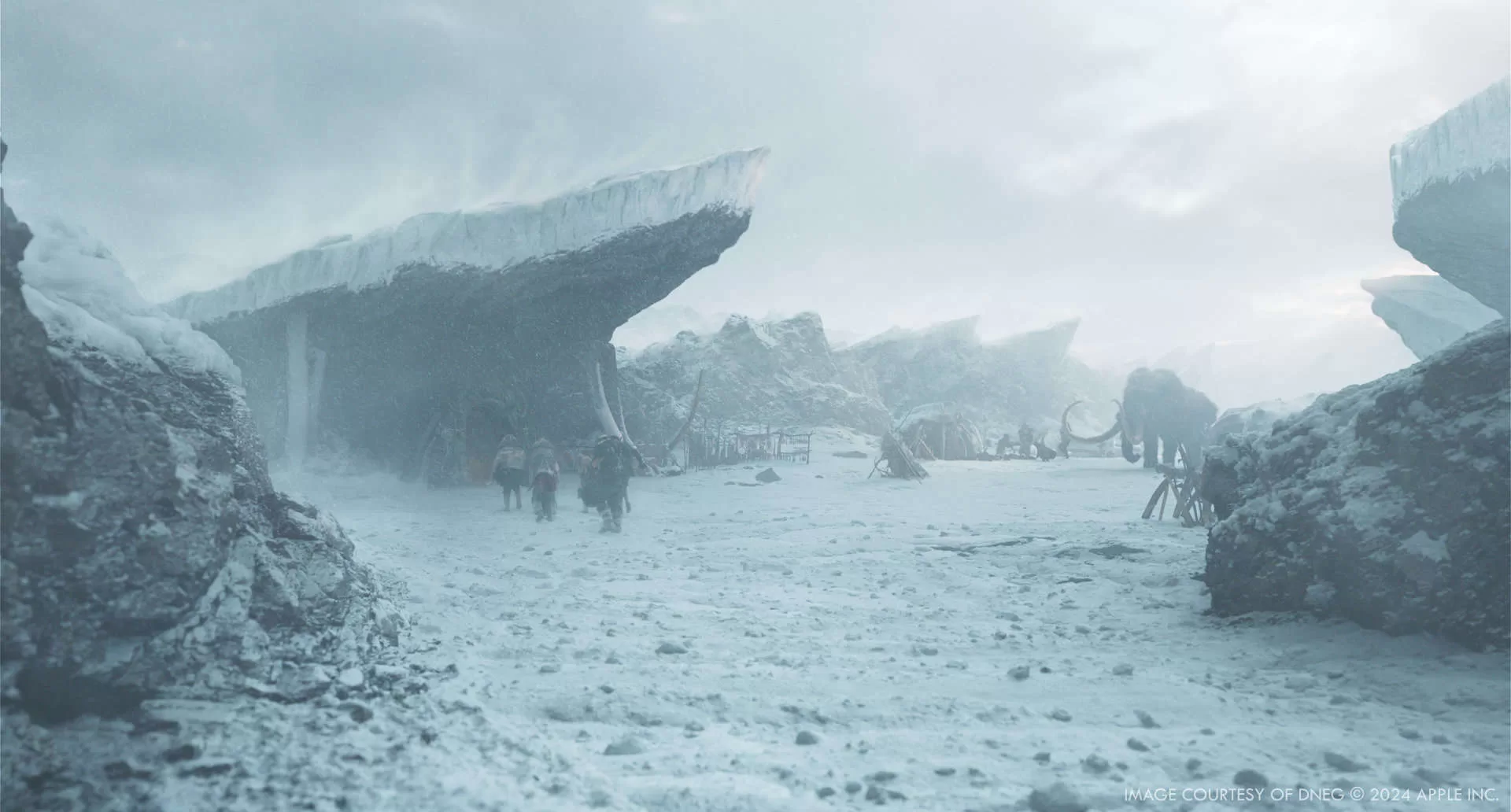
What kind of research and reference materials were used to accurately depict the various historical and fantastical settings?
I wouldn’t claim that our depictions are historically accurate in a strict sense. Although there’s a wealth of historical documentation available, such as on Mayan architecture, one often ends up referencing interpretations from other artists. We certainly drew inspiration from a wide variety of sources, but ultimately we relied on our design sense and expertise in photorealism to create compelling representations of these sites. Our focus was on crafting environments that, while not necessarily historically precise, were engaging and visually striking.

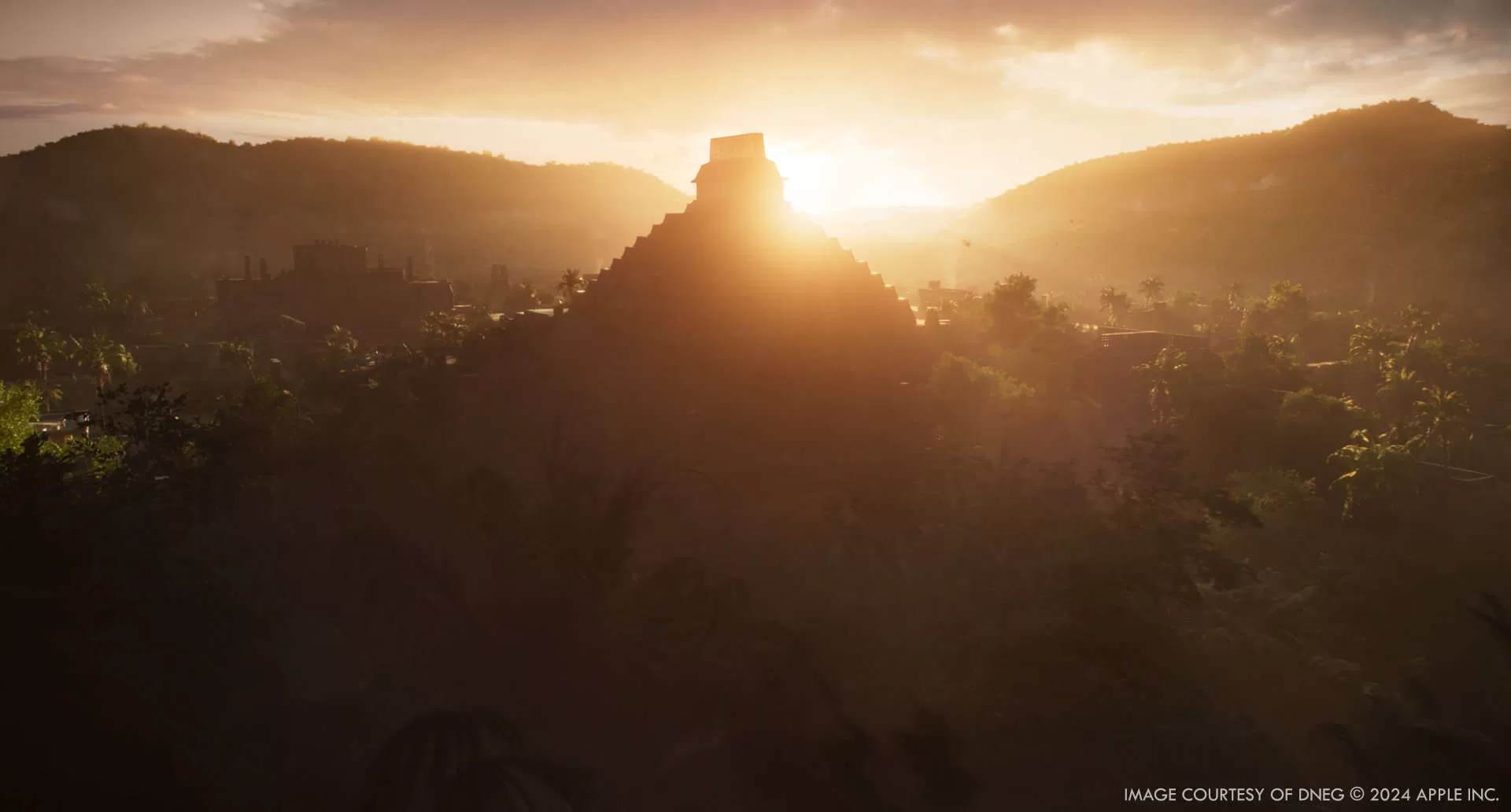
How were the Sky Citadel and its floating elements designed and rendered?
We were fortunate to receive stunning concept art from the production team, which provided a clear design language and colour palette for the Sky Citadel. It was crucial to ensure the Sky Citadel felt distinct from the Fortress of Darkness, yet still shared a common element—a central tower structure—in both environments. After breaking down the individual components, we developed 3D layouts and designed the three main establishing shots for the Sky Citadel. To bring these designs to life, we employed a mix of 3D modelling, procedural detailing, volumetric cloud simulations, and digital matte painting techniques to create the final images.
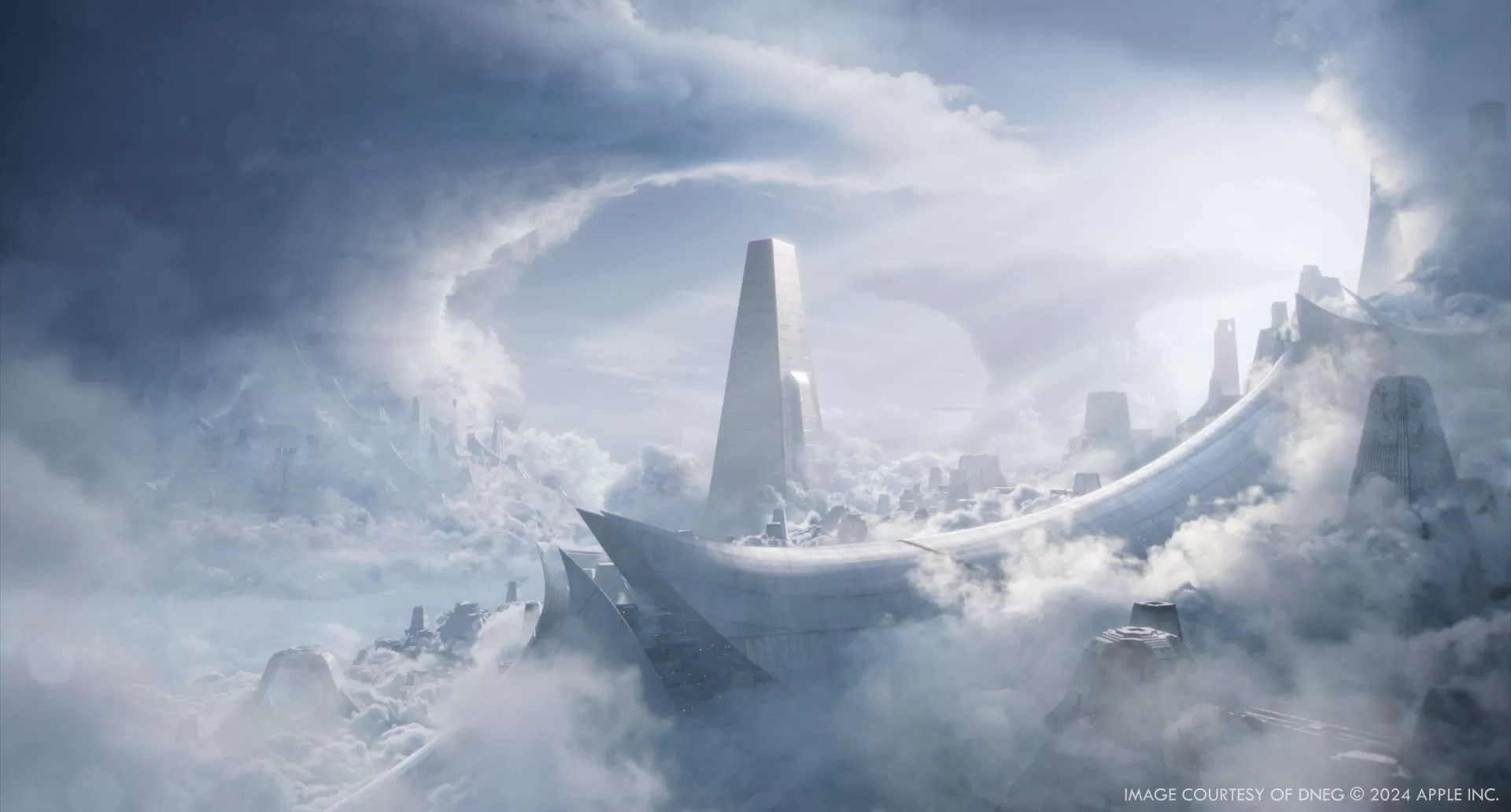
Can you walk us through the process of creating the Fortress of Darkness? What were the key design elements?
The Fortress of Darkness environment was an extensive 3D build for us, as it’s seen from quite a few different vantage points. We have the fortress itself, seen both in wide establishing shots from afar as well as closer up in the final episodes of the season. Then we have the interior of the fortress, the ‘throne room’ if you will, where Pure Evil and his minions reside. From the throne room we’re exposed to a vast view of the surrounding environment with, in the far distance, the white sands of the Time of Legends environment. All of these different areas required attention and an approach that would allow consistency between 450+ shots.

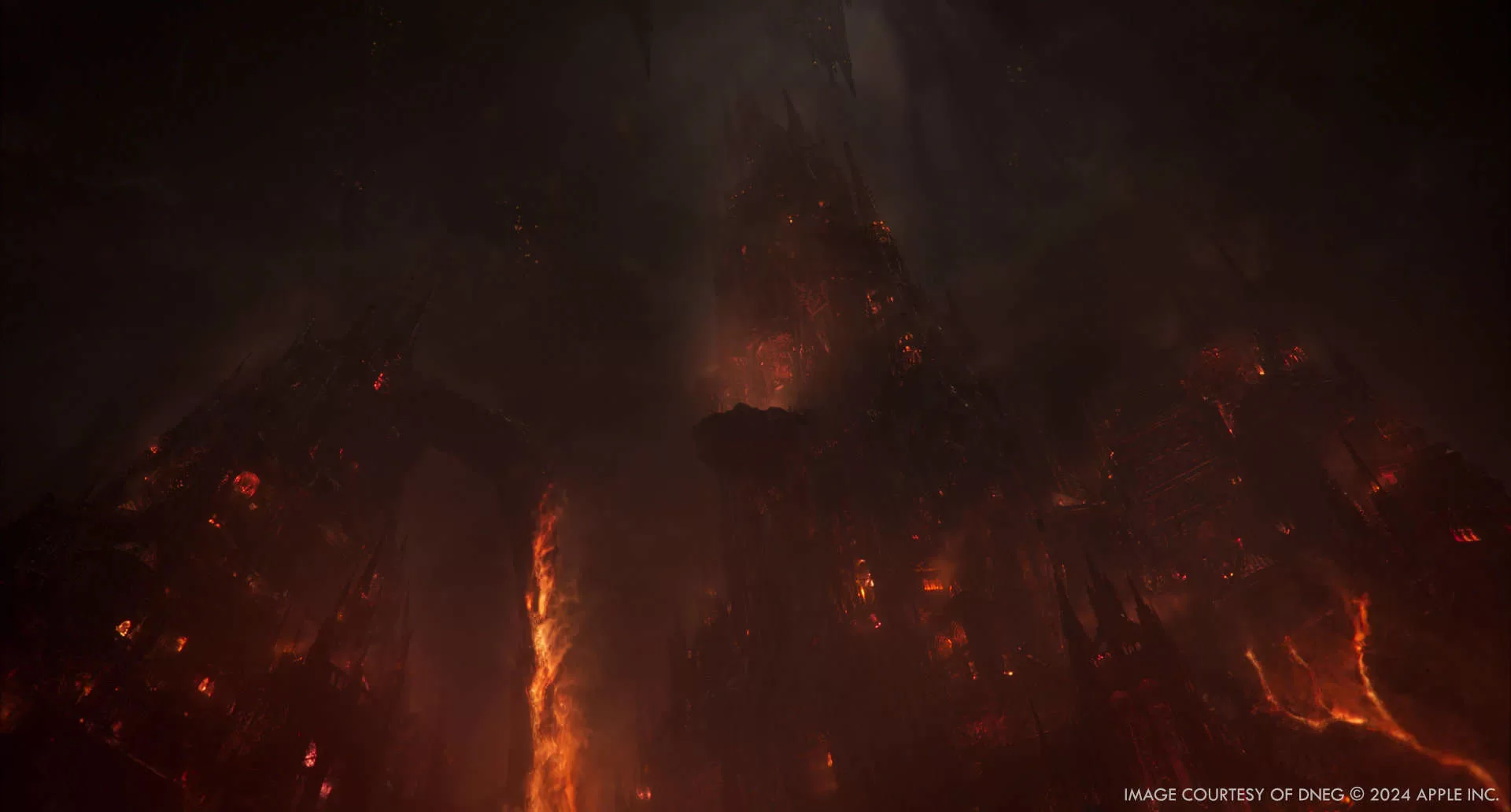
For the interior we extended production designer Ra Vincent’s practical set in the foreground and introduced an extensive background consisting of the ruins of Gothic architecture, steep cliffs, stonewrought staircases, and enormous stalactites. We knew that these background elements would eventually have to be illuminated by fireworks and lightning strikes, so all of this material was textured 3D geometry rather than 2.5D matte painting cycloramas.
The design language of the throne room set consisted primarily of sharp obsidian shapes and rougher untouched rock. We carried that same aesthetic into the surrounding environment and paired it with Gothic architectural elements. For the exterior we also introduced a decay pass to the overall structure, hinting at the acidic nature of the atmosphere eating away at the fortress.
The final design component for the Fortress of Darkness were our rivers of flowing lava which we see flowing towards the fortress, defying gravity at times. If you look closely you’ll notice all the lava in the fortress shots flowing towards the Throne Room high up in the fortress. A subliminal visual hint at Pure Evil being the literal centre of this dark place.
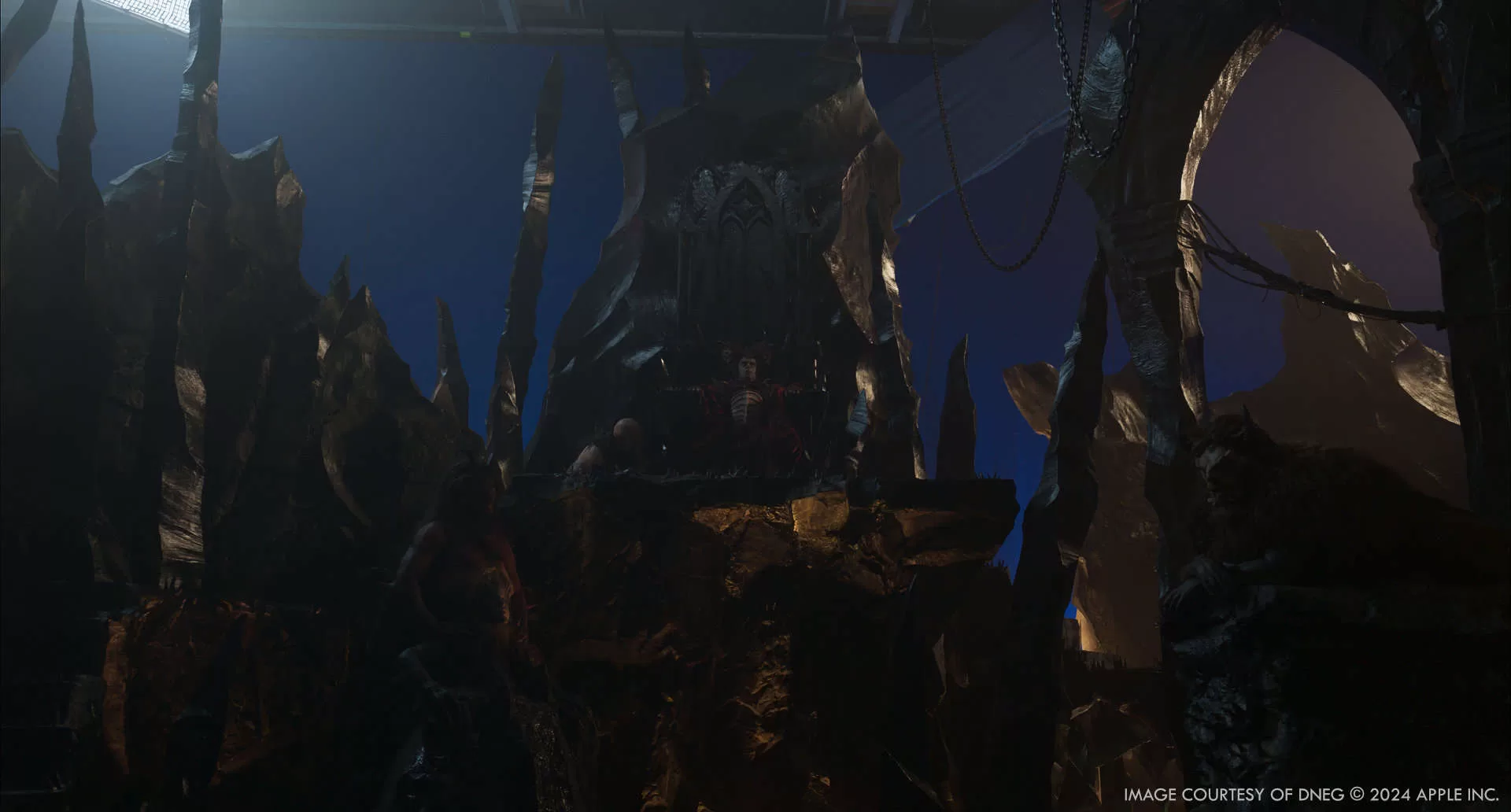
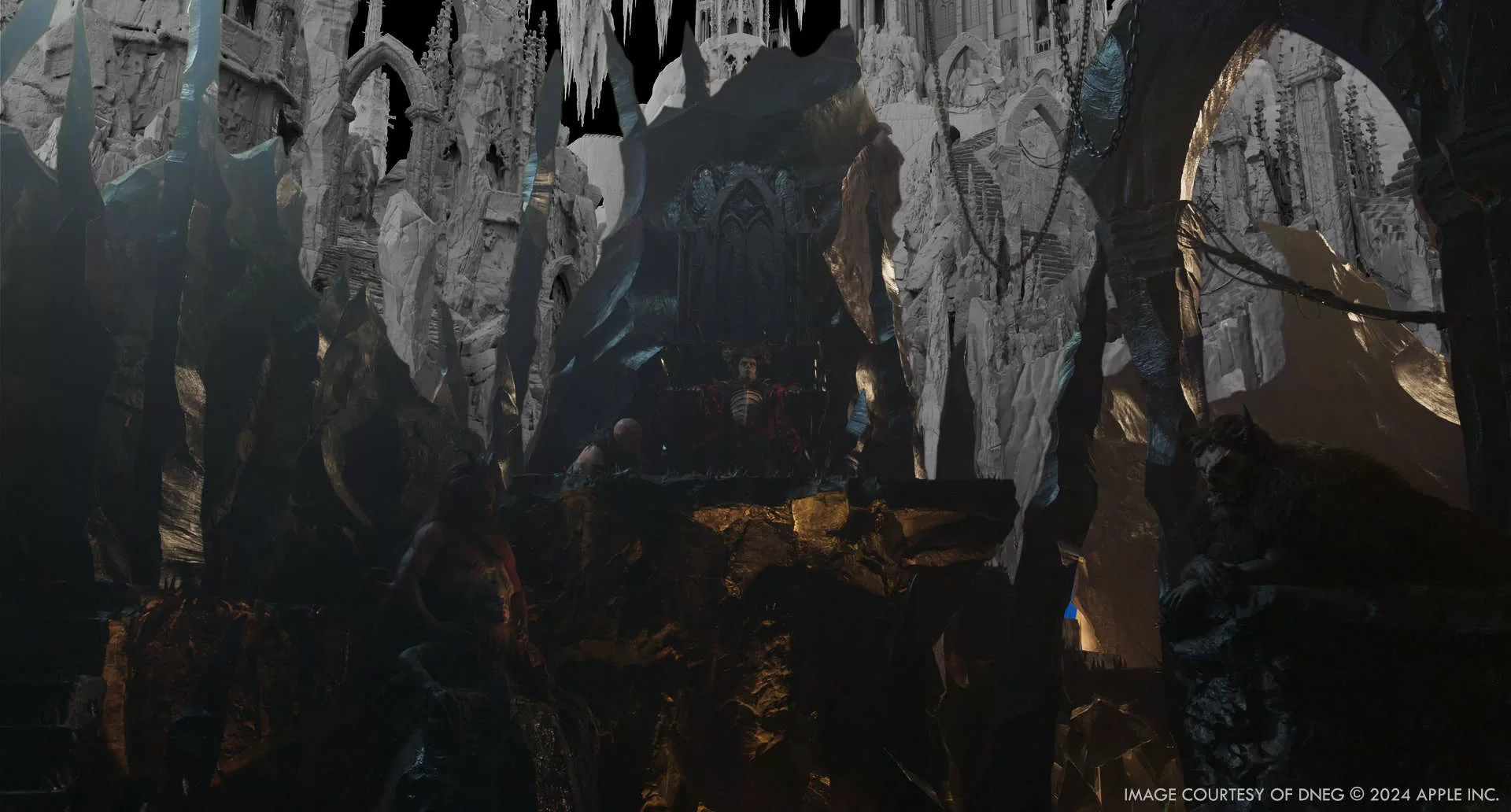
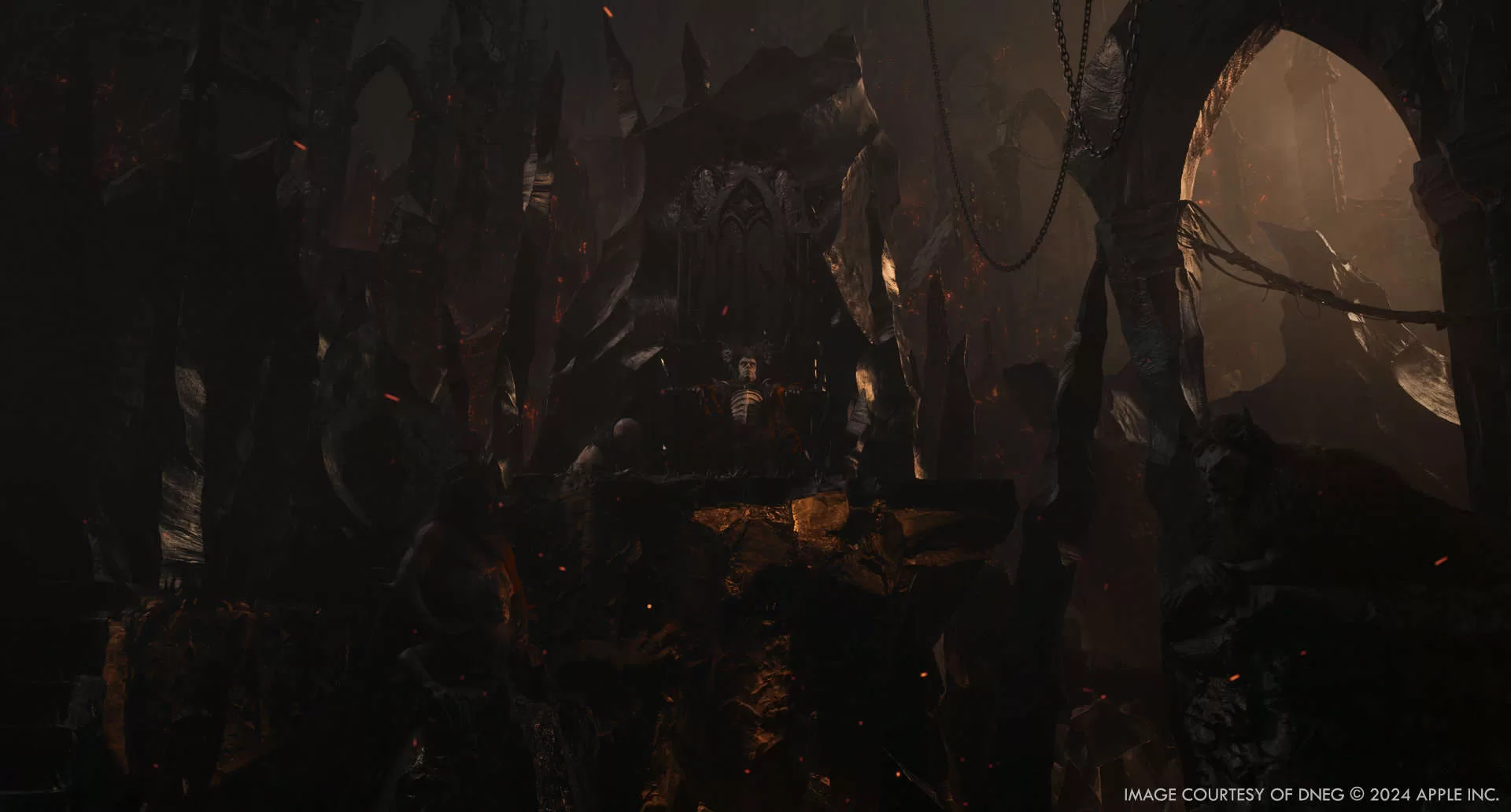
What role did practical effects and miniatures play in the creation of these diverse environments?
We had an incredible reference miniature model built for the Fortress of Darkness. Initially the hope was to actually use the model on screen, but sadly the production schedule was too tight for that to happen. Regardless, the miniature beautifully communicated the flavour and style the filmmakers were after, and it served us as a great starting point to build from.
How did you integrate CGI with practical sets and locations to create a seamless visual experience?
I’m flattered to hear you ask about practical locations because, as far as our work was concerned, there weren’t any. Practical partial set builds and blue screens comprised the majority of the plates for our environment work. A handful of sequences were shot against the virtual backgrounds we built early on, most notably Mansa Musa’s camp scenes and the Neanderthal settlement sequences. Arguably one of the biggest challenges on the show for us in visual effects was to diminish the feeling that the majority of our plates were photographed on soundstages.
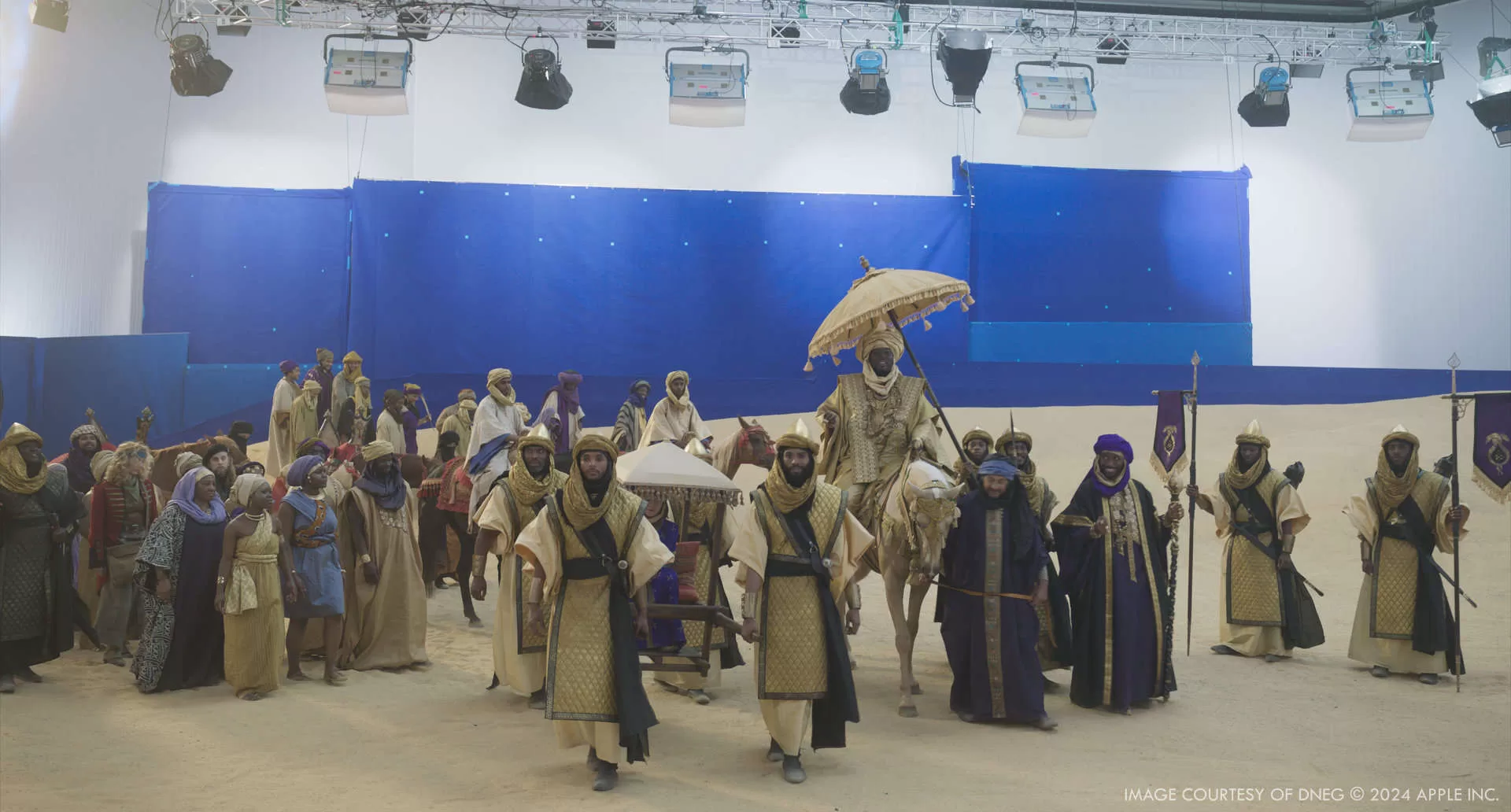
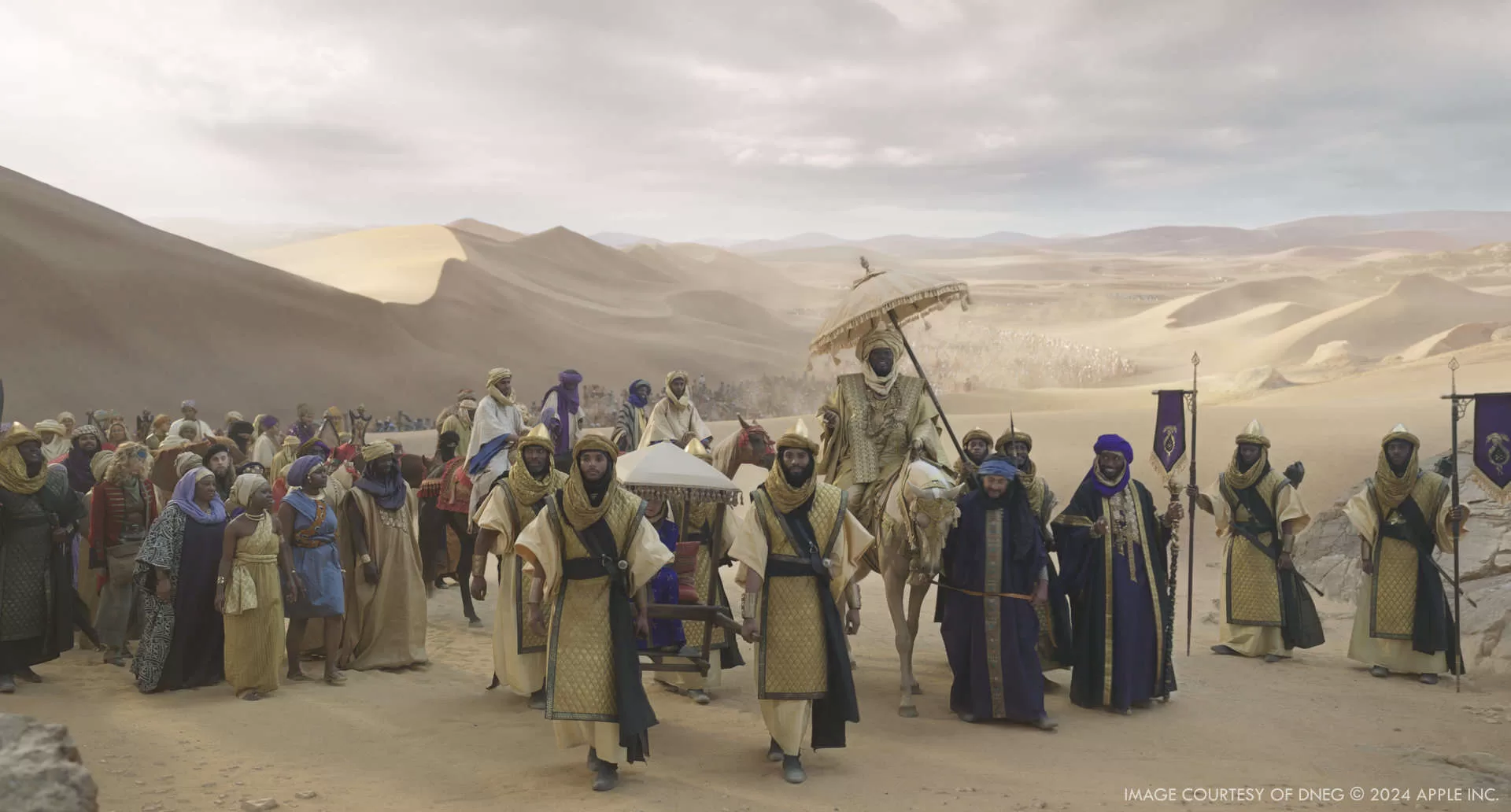
What techniques were used to achieve the look of the ancient and futuristic environments?
I wish I could share some groundbreaking technological secrets here, but it mostly came down to good old elbow grease I’m afraid. We relied on hand-painted concept art, detailed asset work, and digital matte painting to bring both these ancient and futuristic environments to life. Ultimately, it’s not just about the techniques or tools used; it’s the sensibilities and unique talents of the artists involved that truly make the difference in achieving the final look.
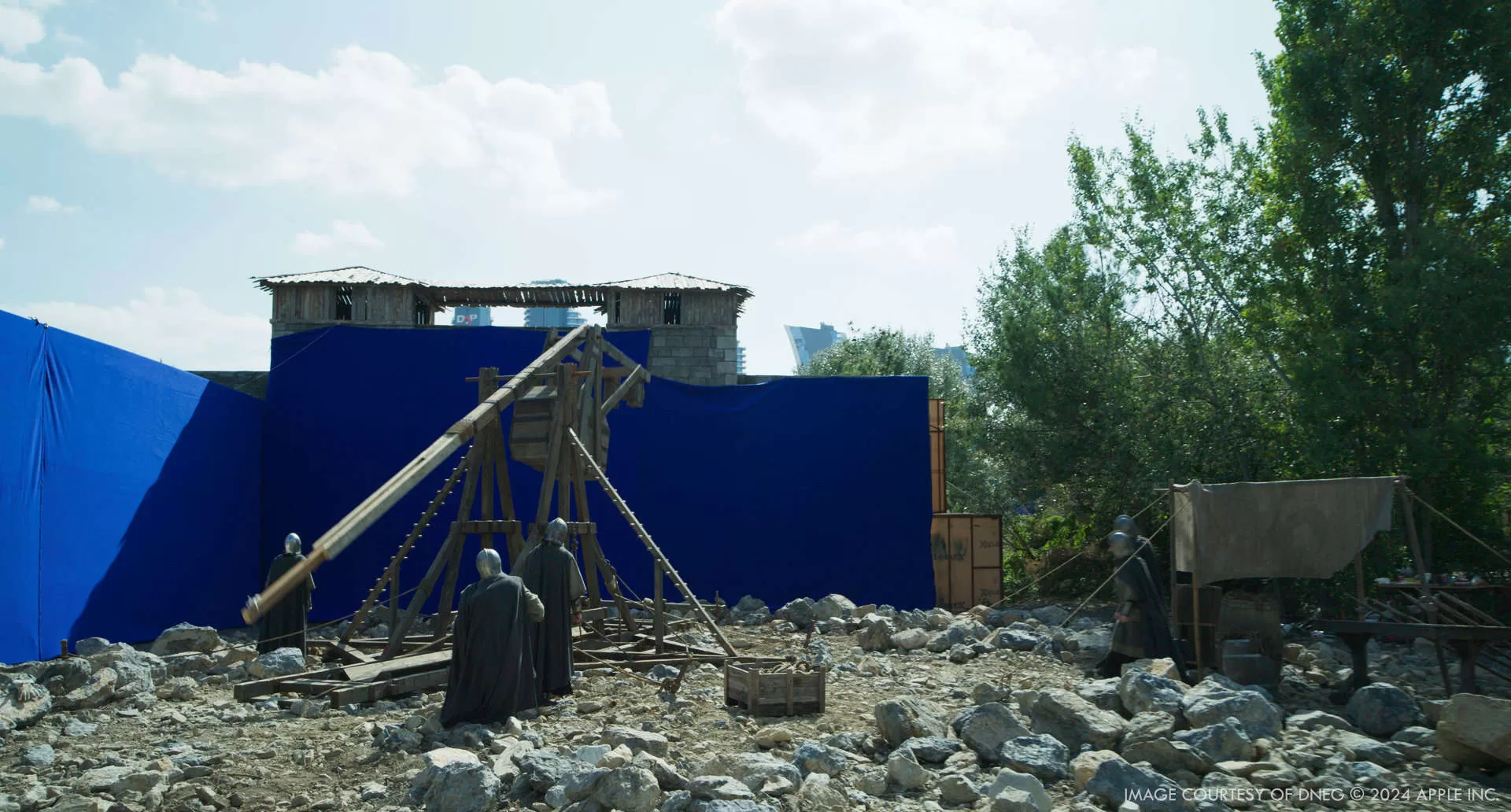
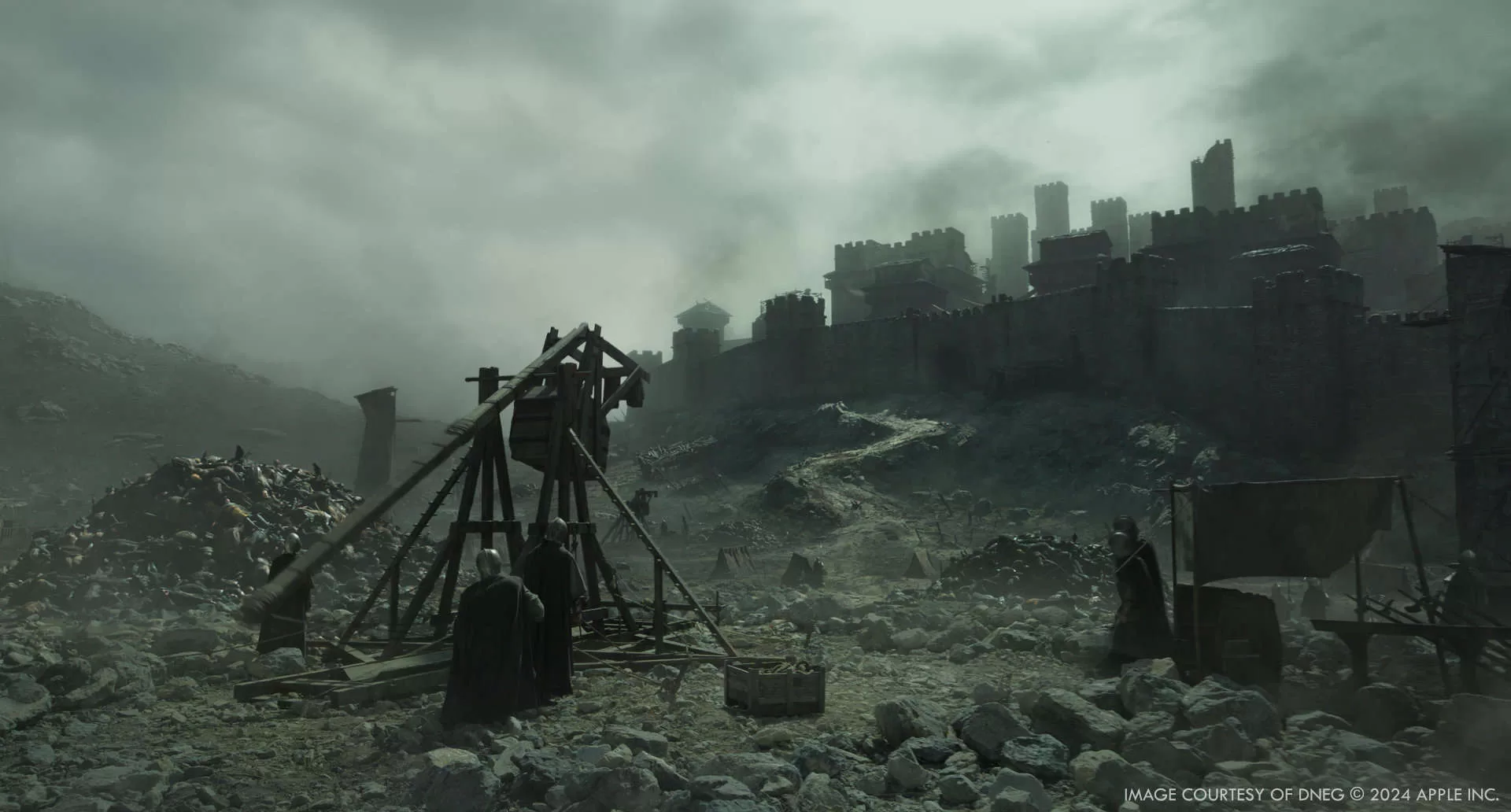
How did the design team handle the scale and depth of environments like the Sky Citadel compared to more grounded settings?
No matter how fantastical or alien an environment’s design is, any physical structure still has to obey the same laws of light and gravity. For the Sky Citadel, we had our cloud elements as a grounding component. To add scale to the buildings, fine details were introduced that were reminiscent of contemporary architecture. Even though there aren’t any contemporary architectural features, such as windows, doors or staircases visible as a clear indication of scale. Subtle wear and tear in our textures as well as finer frequencies of procedurally generated detail helped with selling the illusion of scale.
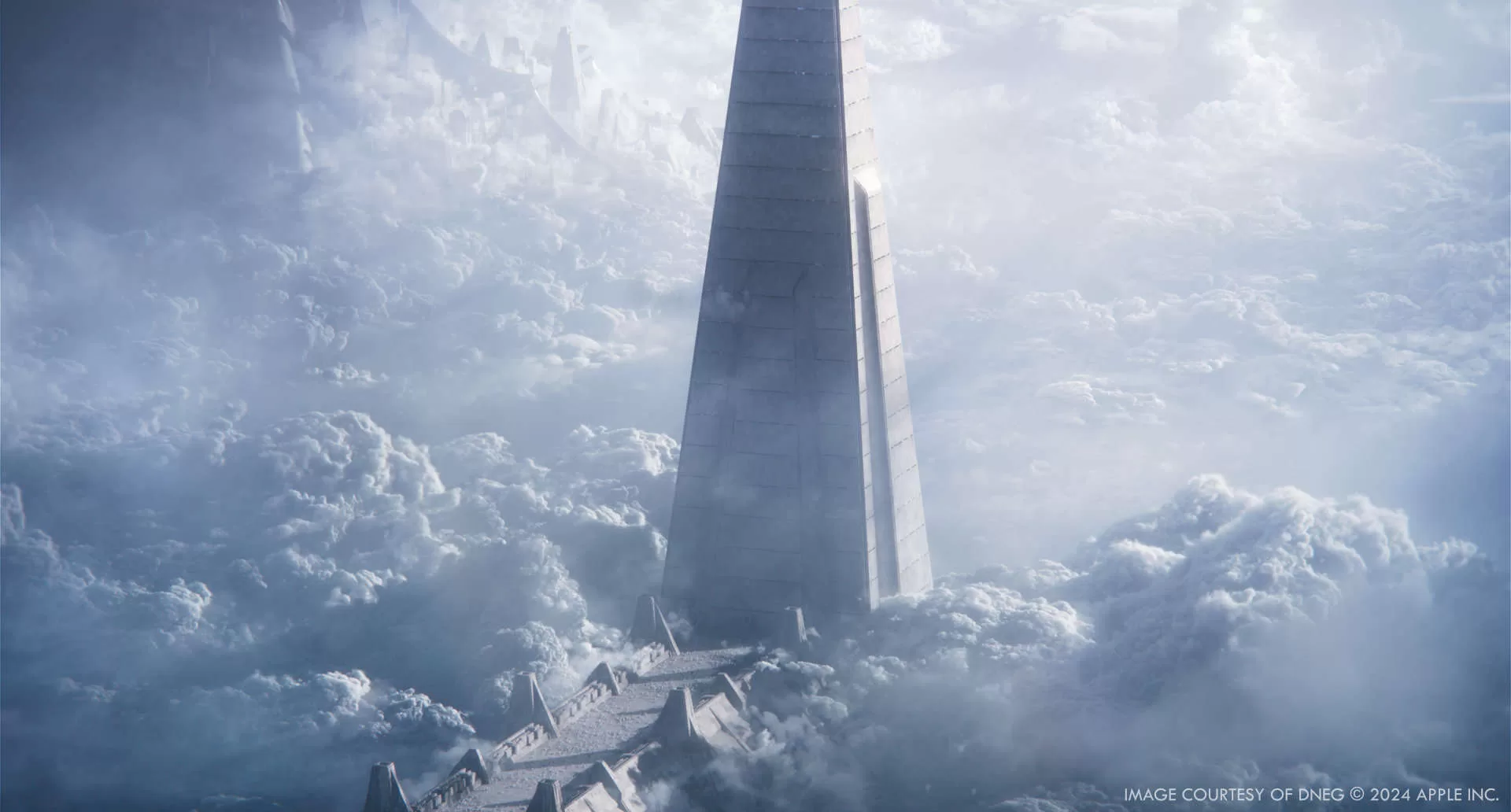
What specific visual effects challenges were faced with the animated or CGI characters?
I would say that the shots we did featuring the Supreme Being in Kevin’s bedroom and at Stonehenge were certainly an interesting challenge. A giant floating marble statue of three, light and smoke emitting, talking faces which still had to look photoreal and feel physically present within the scene. It’s a hugely surrealistic concept and required a fair bit of exploration to find the right look in order to make it all work as there was little to nothing to help ground the element in any form of reality. Thankfully we did have the luxury of having a lifesize practical prop created of the head, which served as an excellent starting point.
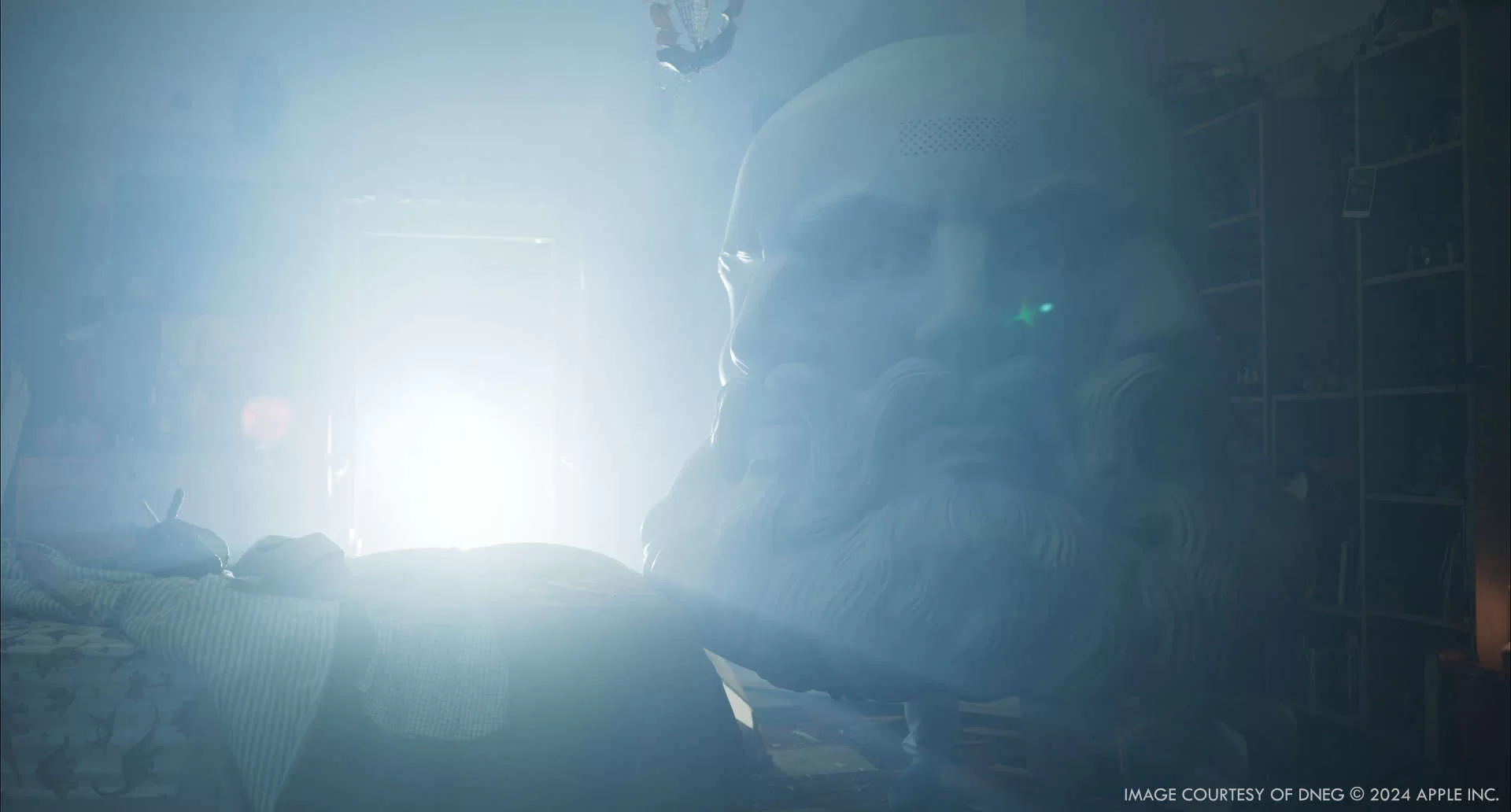
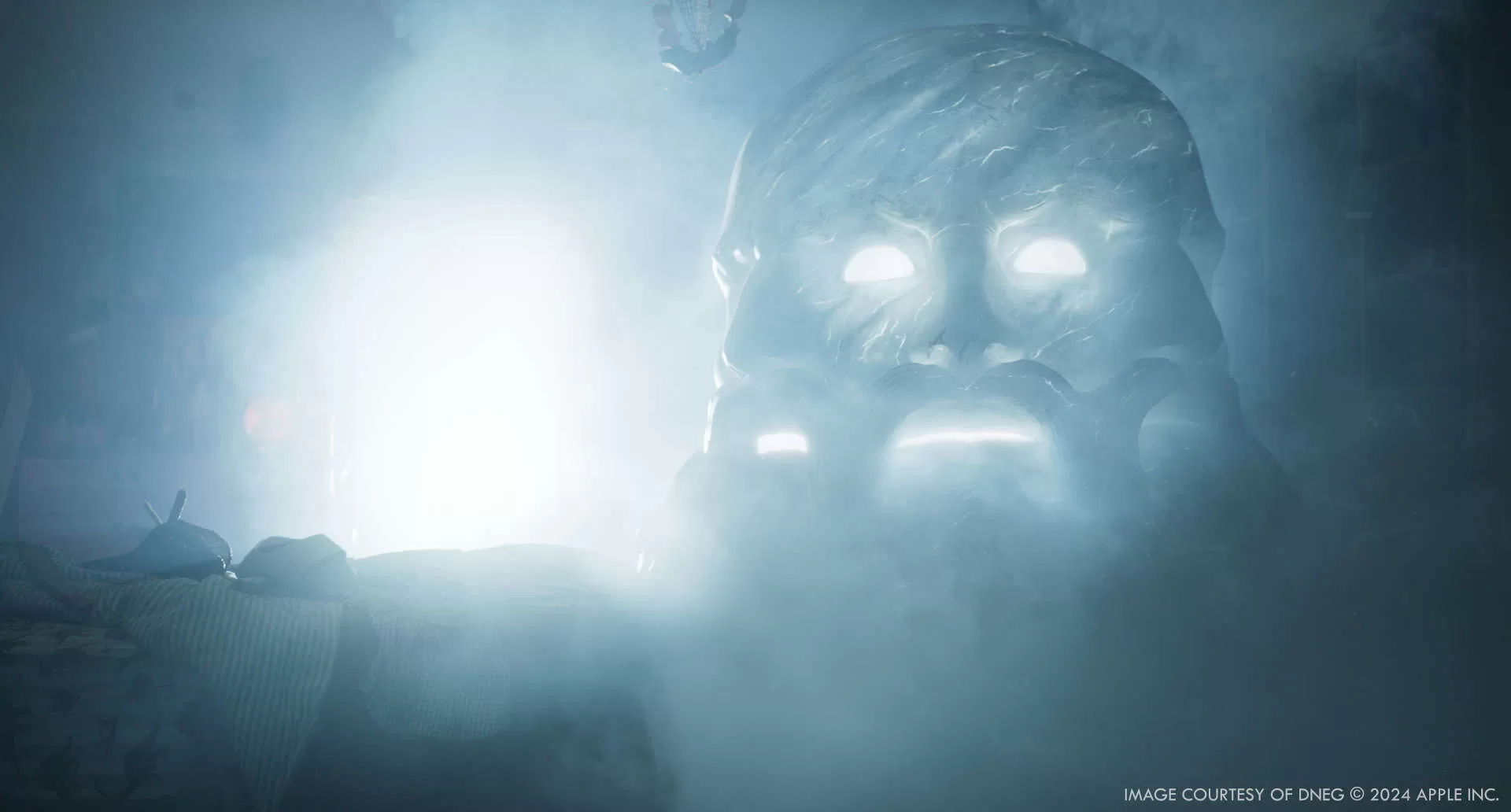
How was color theory used to differentiate and highlight various environments?
I am not a big believer in colour theory as I have seen artists break any perceivable rule within it and proven that colour, for the most part, is arbitrary. There certainly are tasteful pairings and clashing colour choices, but in general I feel one can make almost anything work when the tonal structure of a frame is well organised and the larger compositional shapes are sorted.
Obviously, there are environments where we wanted to establish a distinct mood and leaned heavily into stereotypical palettes and lighting scenarios. The dark smokey environment of the Fortress of Darkness featured a sharp, more aggressive shape language lit by flowing magma. There’s no hiding the fact that all these creative choices lead to a look hinting at mankind’s general visualisation of hell.
A set of polar opposite choices was made for the Sky Citadel. Starting with the icey cold colour palette, the clean and bright lighting, soft organic cloud shapes, and flowing elegant architectural shapes. Partially leaning into visual cliches as it suited the lighthearted tone of the script and ultimately served the story. Given the bandits’ travels through various locations and time periods, it was essential to give each environment a unique visual flavour to effectively convey the tone and mood of each new setting we arrived at.
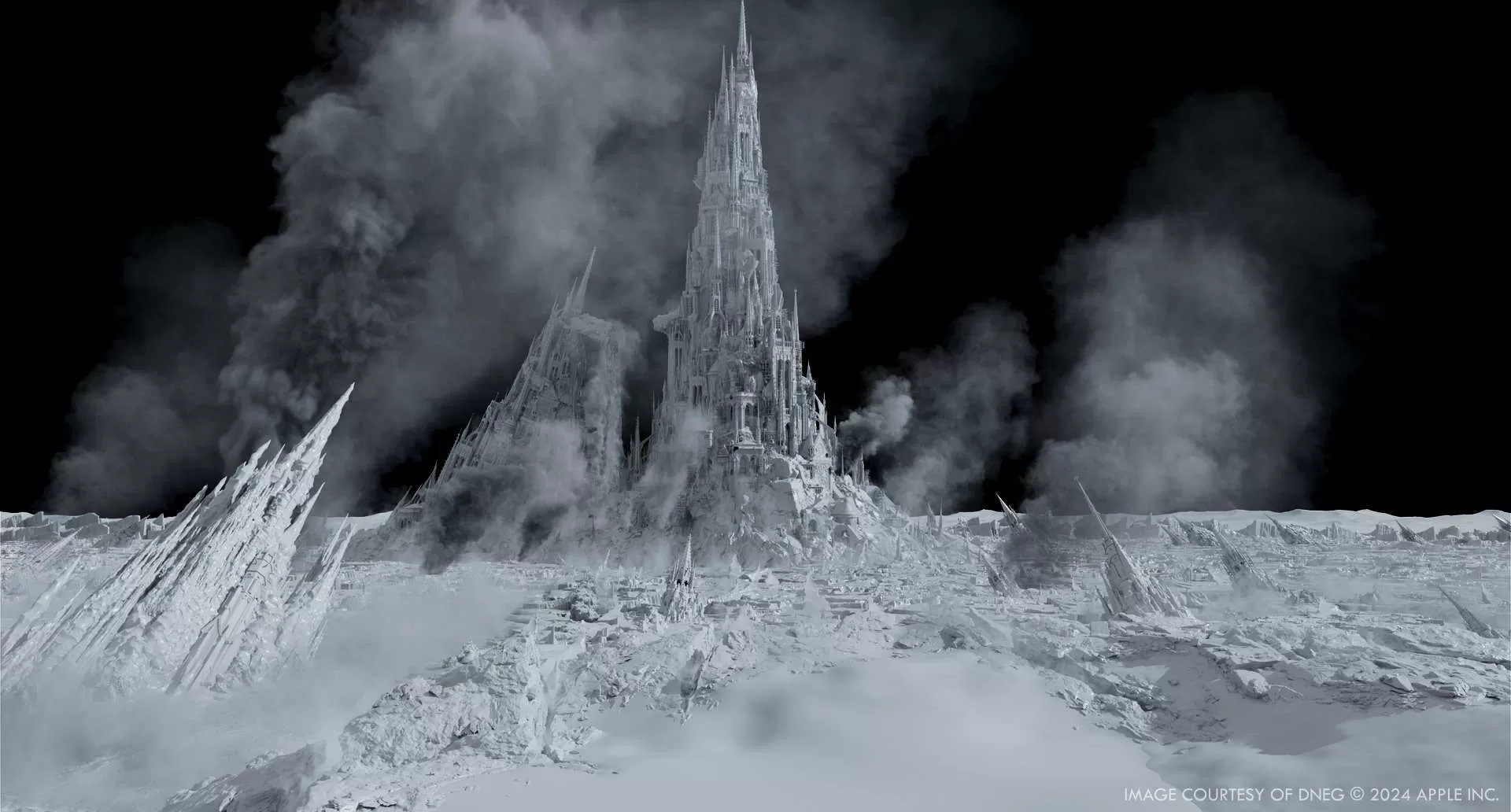
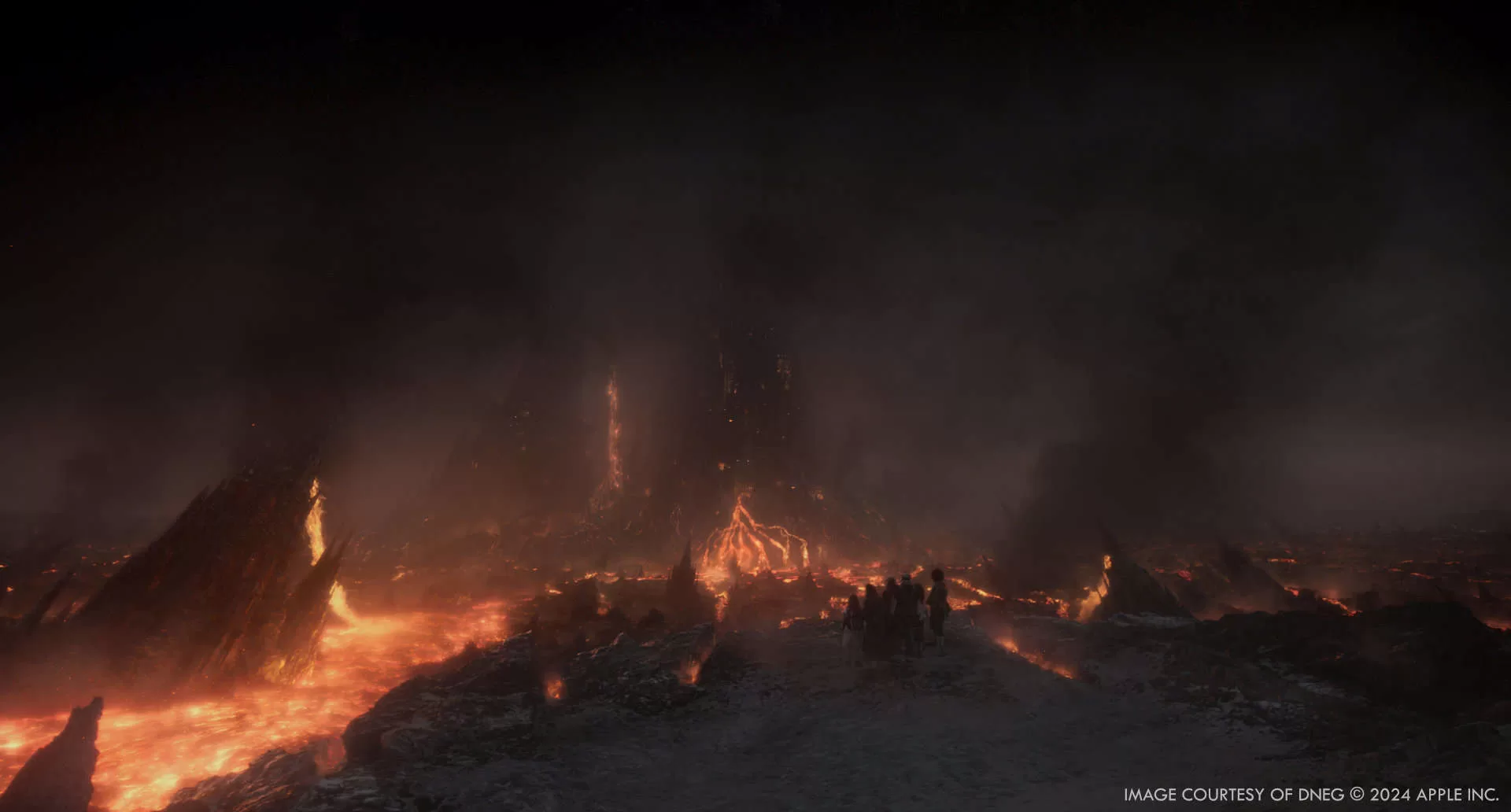
Were there any notable adjustments or changes made during the production process to improve the visual effects?
The ability for us to open up the actual Unreal files used by our virtual production team to essentially regain access to the projected background footage in a shot was a pretty big deal. It helped kick-start the process of enhancing what was shot on the day and allowing us to really polish these scenes and introduce additional layers of detail, aiding in making it all look a little more photorealistic. For quite a few sequences, we decided to keep working within Unreal and the final elements inside the comp are in fact rendered real-time.
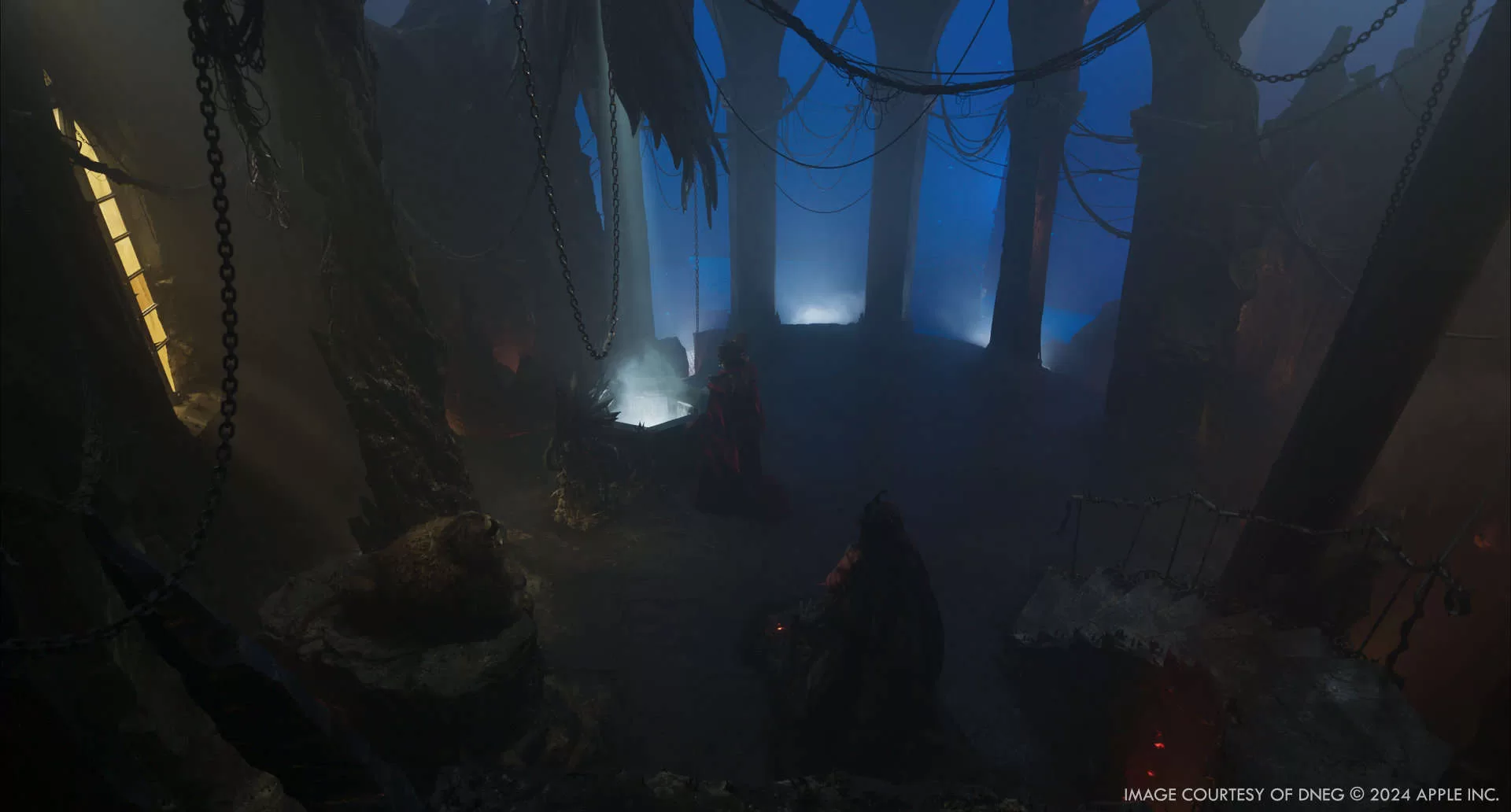
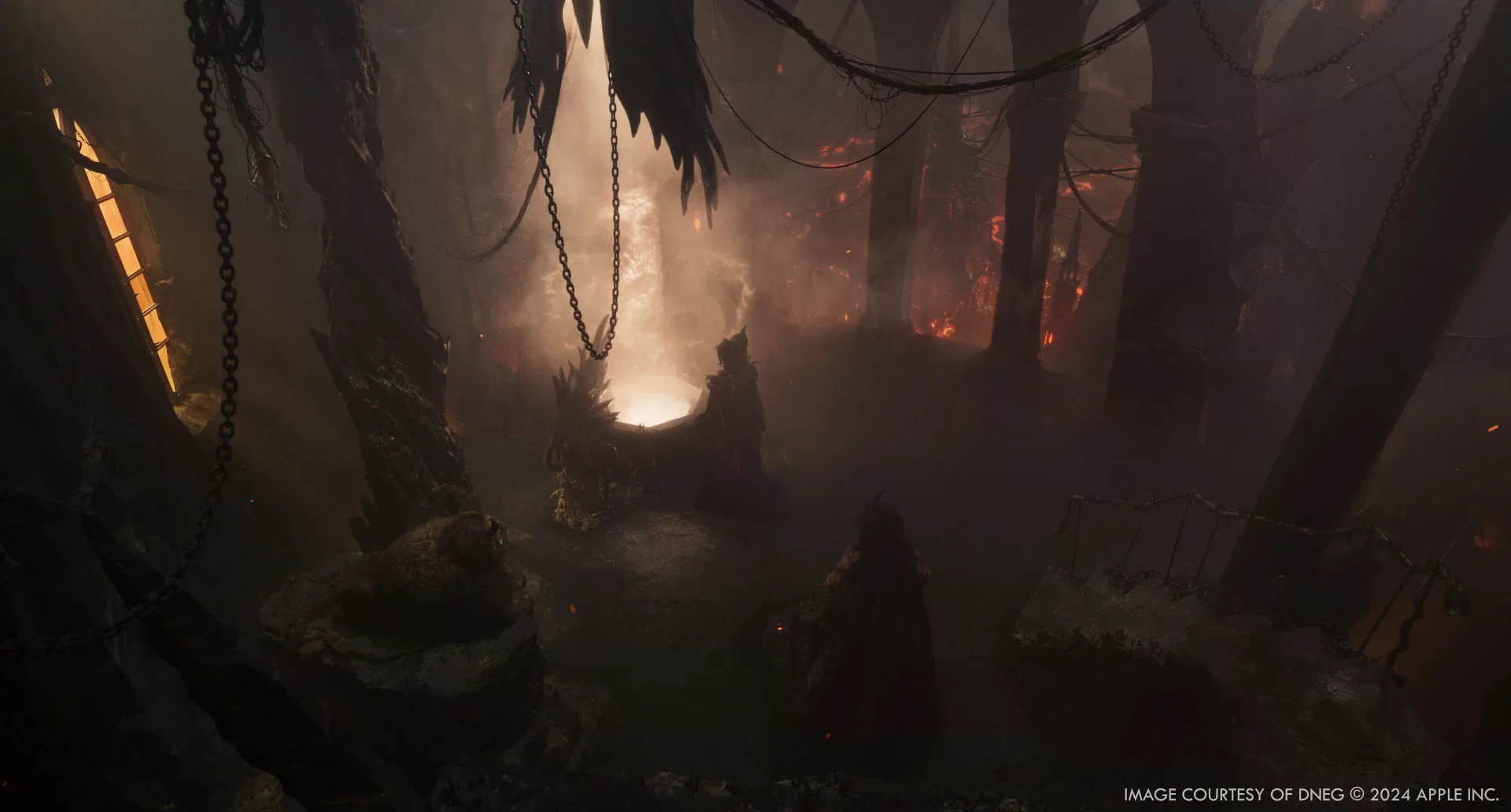
What were the most complex sequences to create in terms of visual effects?
No particular sequence stands out here. Every sequence had its own set of challenges.
Were there any unexpected technical or creative challenges encountered during the production?
For many of us this was the first time dealing with a 4K HDR show and especially the HDR component has proven to be incredibly unforgiving as far as the final output is concerned. We had to pay a lot more attention to what lived inside both the overexposed areas of the frame as well as the deepest blackest regions. HDR puts a magnifying glass on the values and information within every single pixel inside the frame, regardless of how blown out or inky black things look when finalising the general look of a shot. It’s a new reality we all have to get used to, especially for high end streaming content, but the scrutiny required to make these HDR outputs watertight was certainly a new challenge.
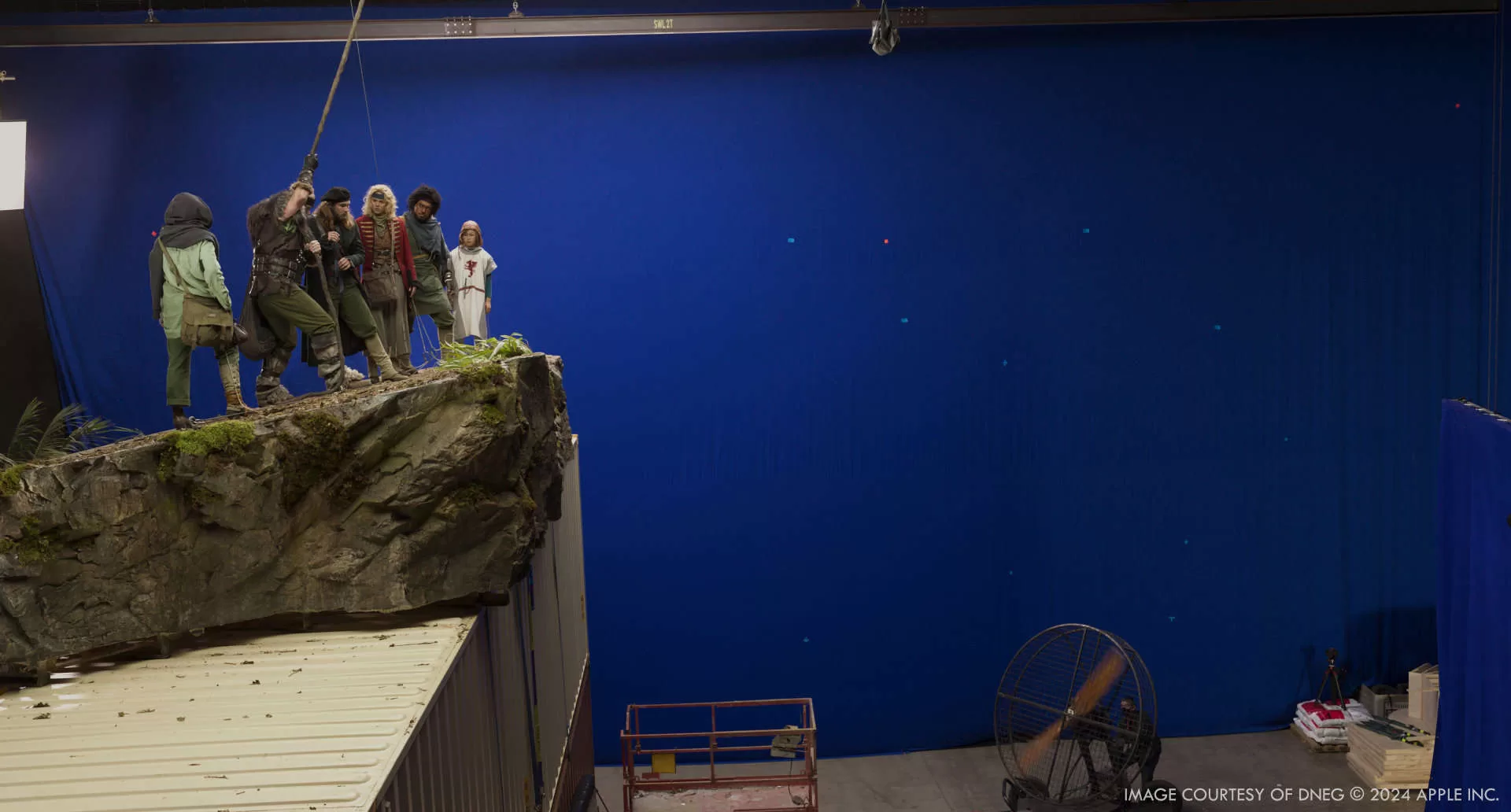
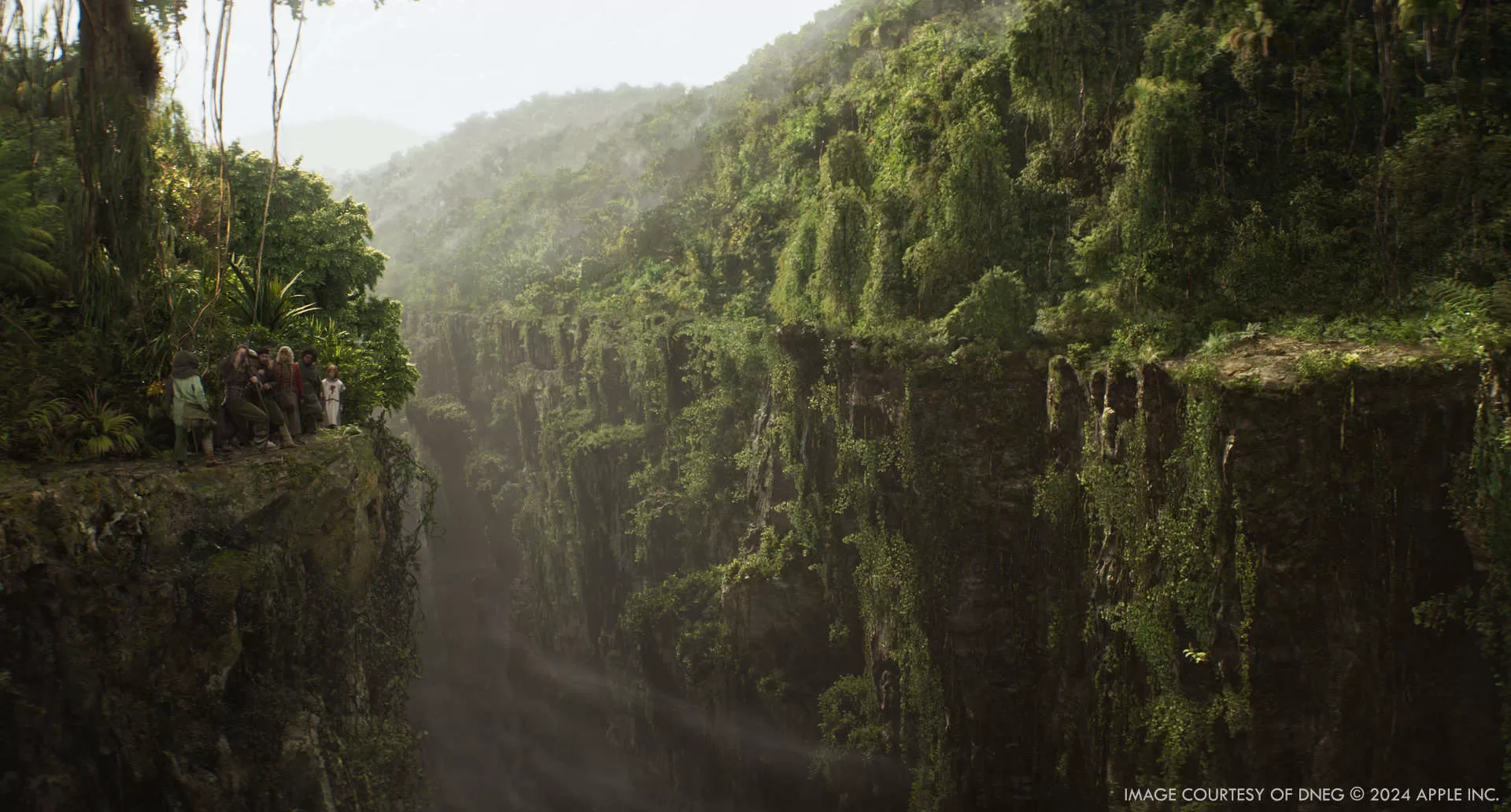
Were there any memorable moments or scenes from the series that you found particularly rewarding or challenging to work on from a visual effects standpoint?
Plenty, but I was particularly pleased with how some of the shots featuring Pure Evil’s golden diorama sphere effects turned out. It was another highly conceptual idea that came together quite nicely as a combination of fluid simulations and particle FX. It’s always fun to be asked to create something “never seen before” and I felt that that effect in particular felt fresh. Also some of the wider shots of the Supreme Being firing his lightning bolts in the last episode were creatively quite rewarding as there was a significant amount of set extension and plate relighting work involved with them.
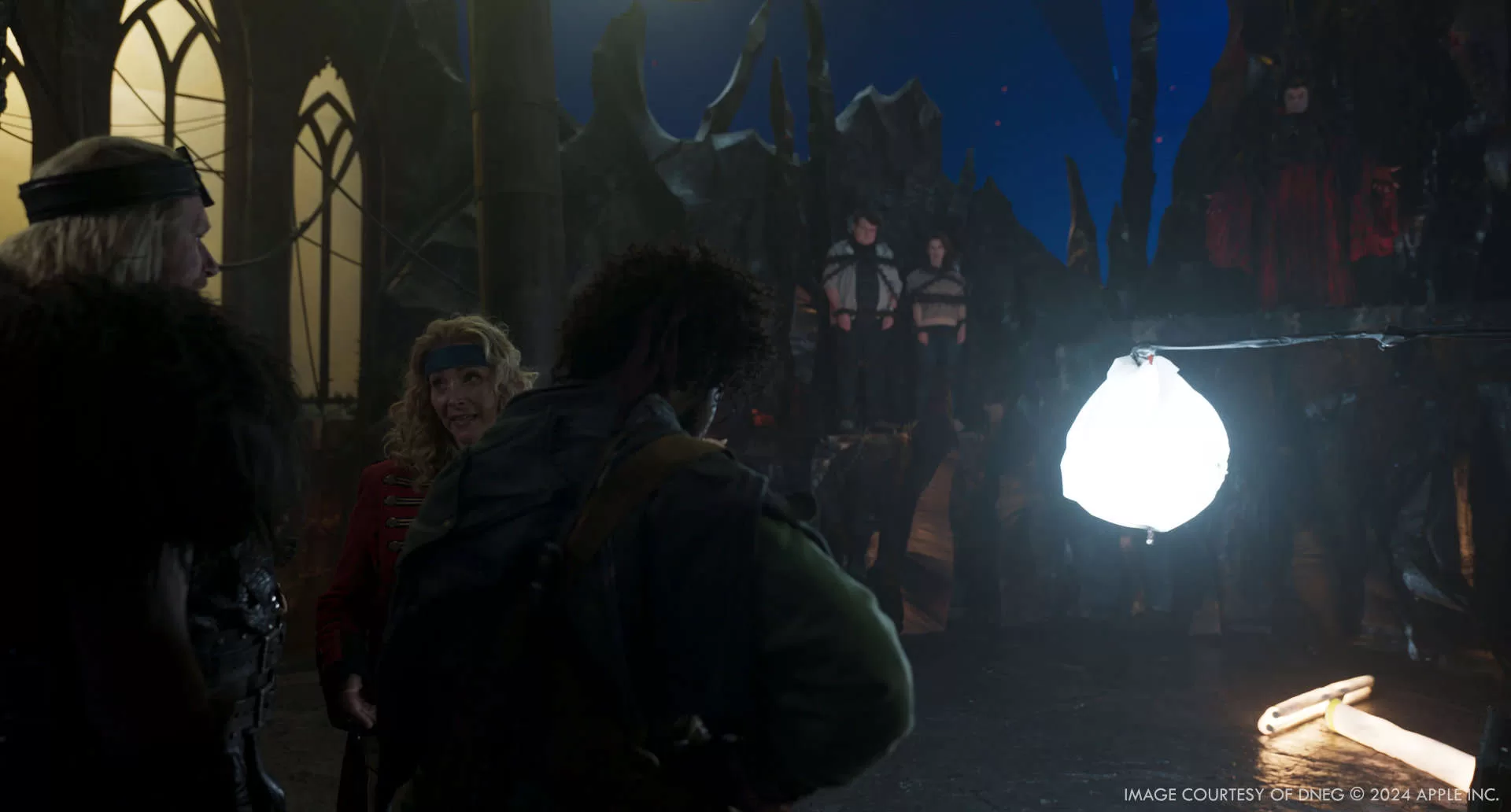

Looking back on the project, what aspects of the visual effects are you most proud of?
Looking back on the project, I’m most proud of the sheer scope and variety of the visual effects work we achieved. Every episode threw a new challenge our way—no two episodes were alike, which meant we never had a chance to get bored! One moment we were crafting detailed historical environments, and the next we were diving into fantastical realms with surreal elements. This constant shift kept the work exciting and pushed us to continuously innovate. Whether we were dealing with gravity-defying lava or ethereal cloudscapes, each task allowed us to explore different creative avenues. It was a fantastic journey through diverse visual styles, and seeing it all come together was truly rewarding.
How long did you work on this show?
About 10 months.
What’s the VFX shot count?
DNEG’s total shot count was 1,094 shots.
What is your next project?
Sadly a bit too early for me to share at this moment, but I cannot wait for you to see it!
A big thanks for your time.
WANT TO KNOW MORE?
DNEG: Dedicated page about Time Bandits on DNEG website.
© Vincent Frei – The Art of VFX – 2024




